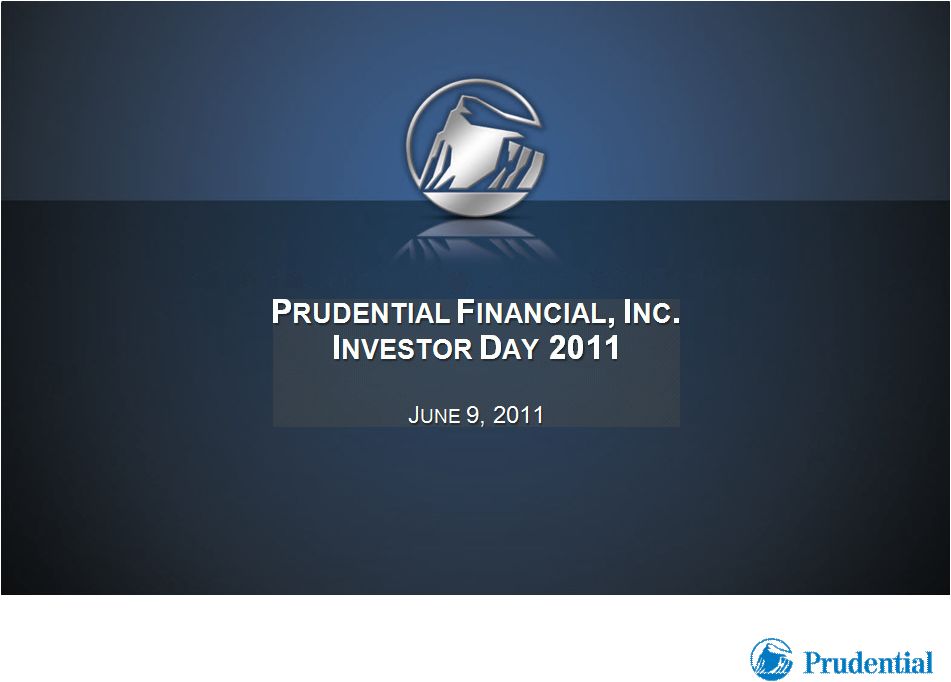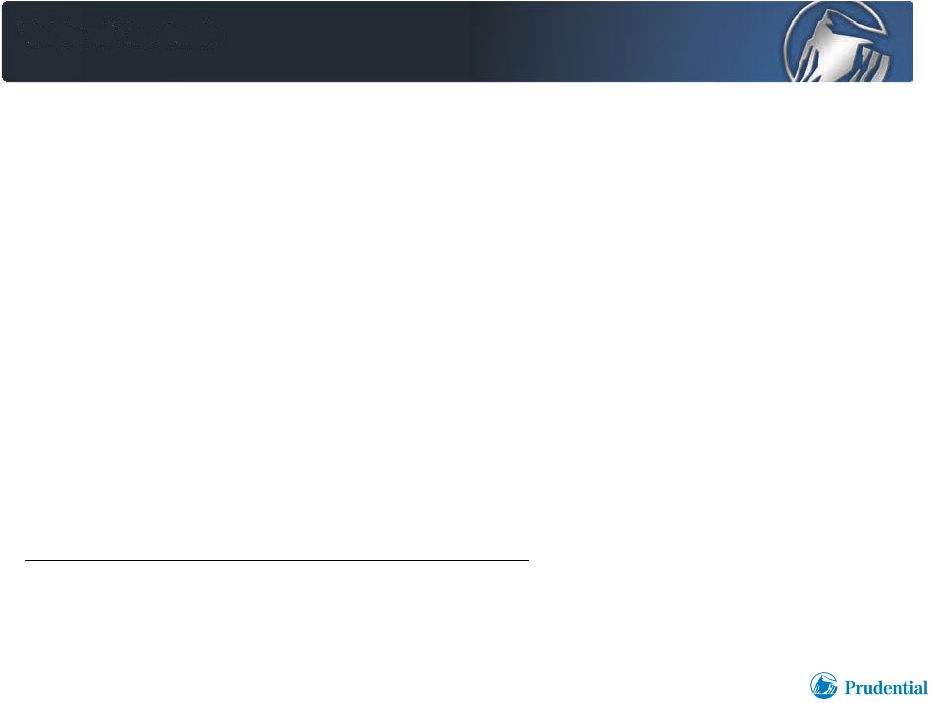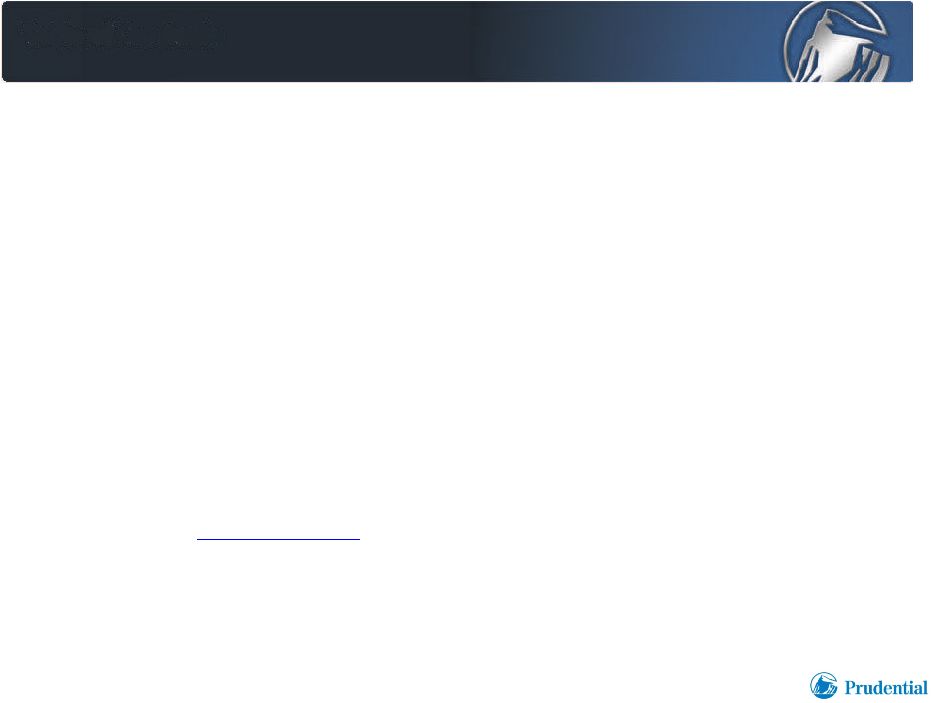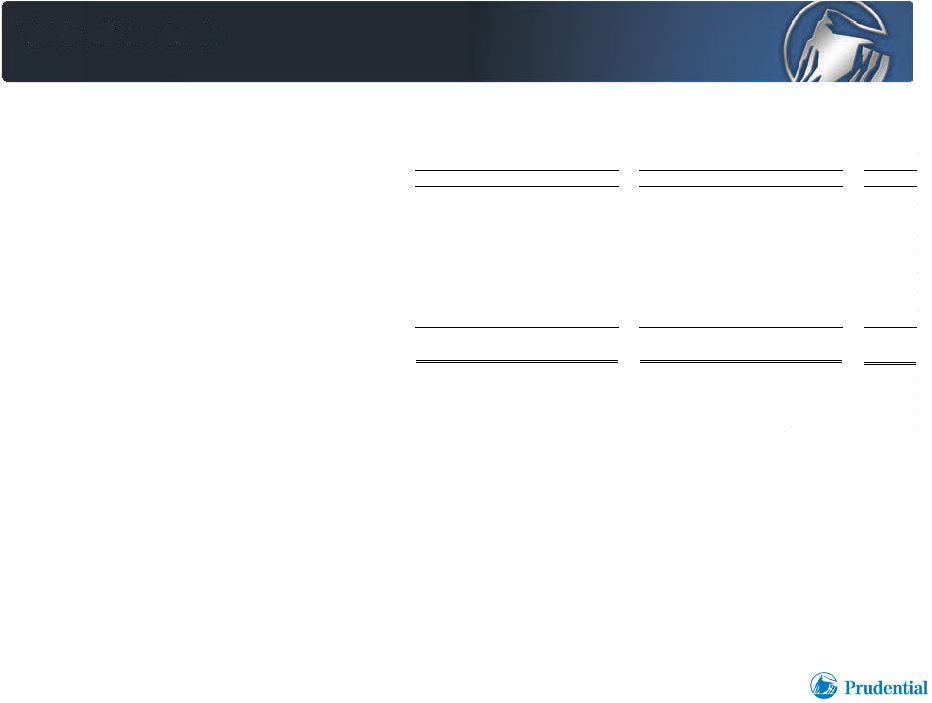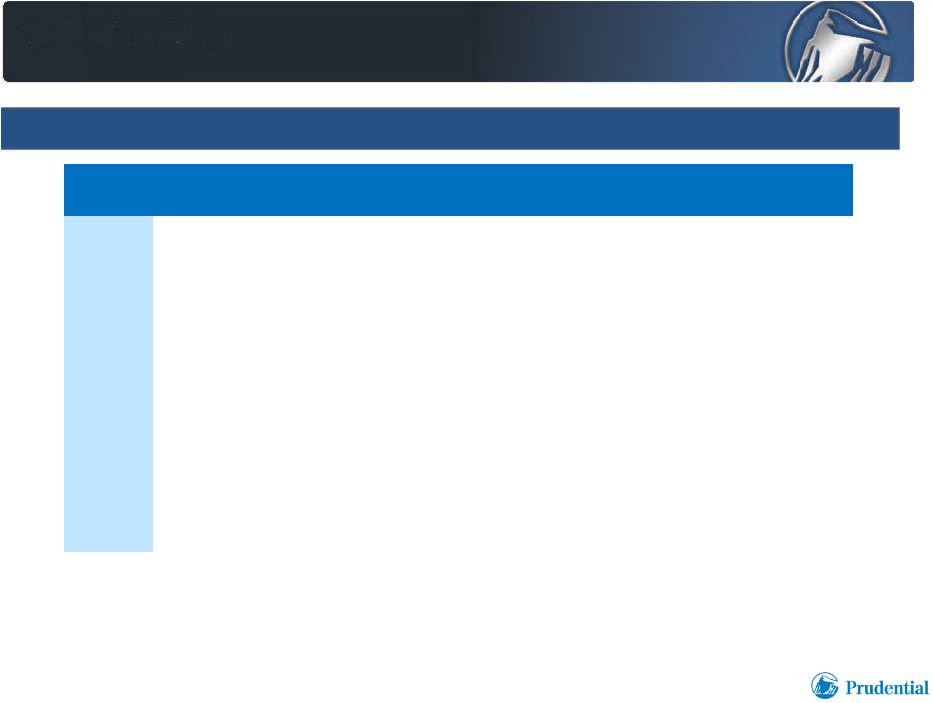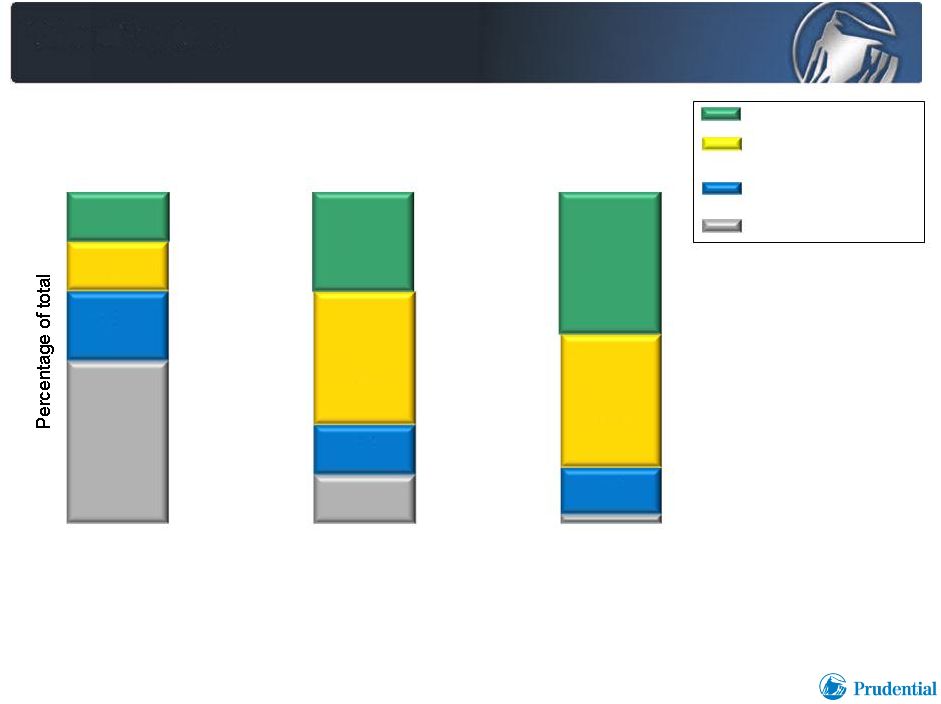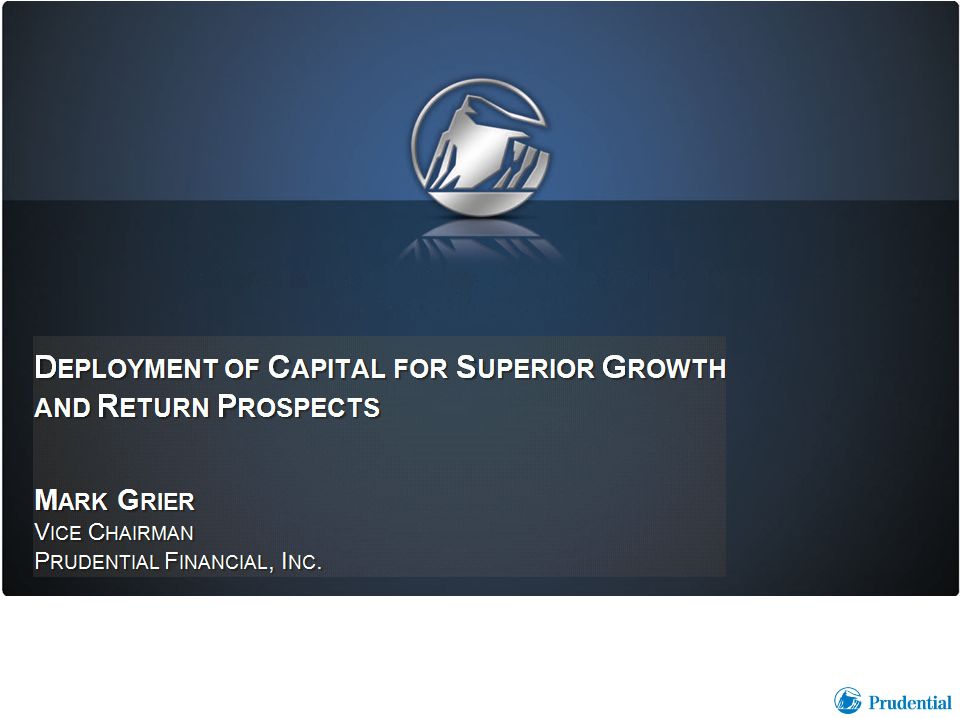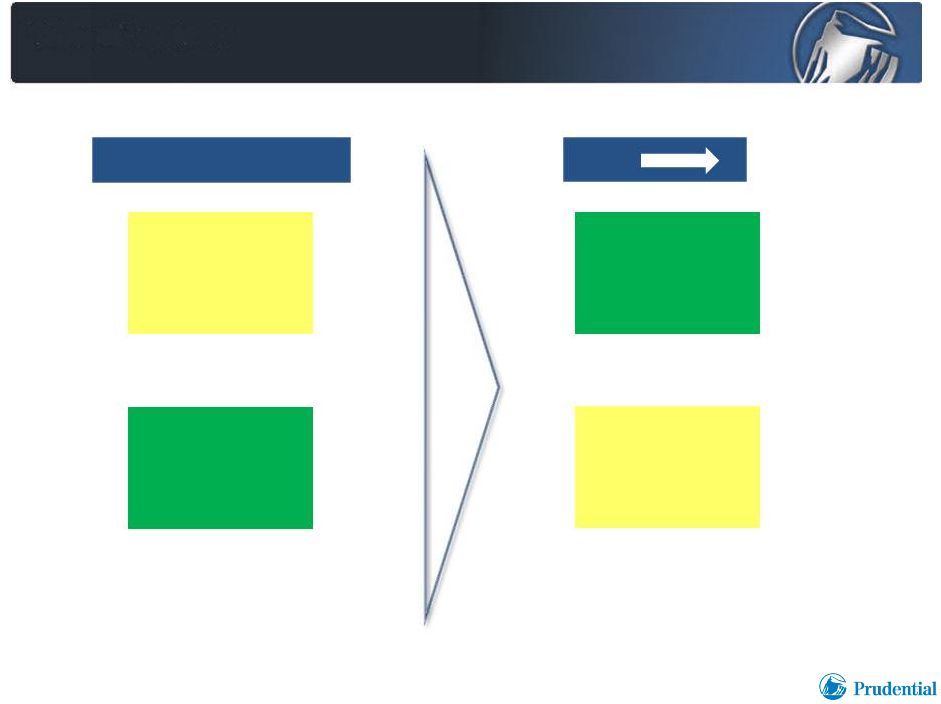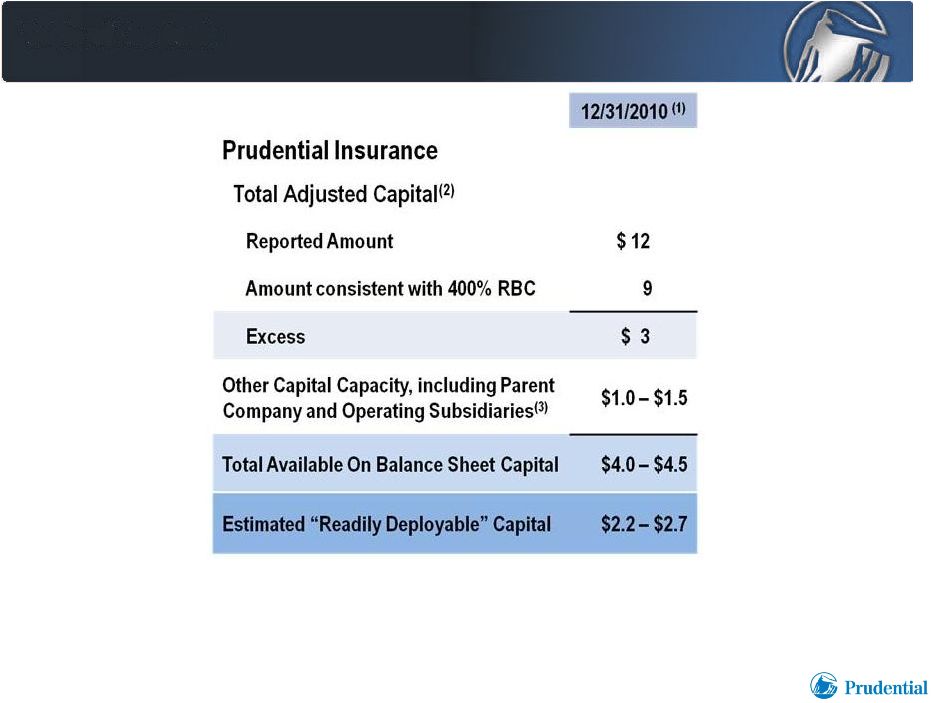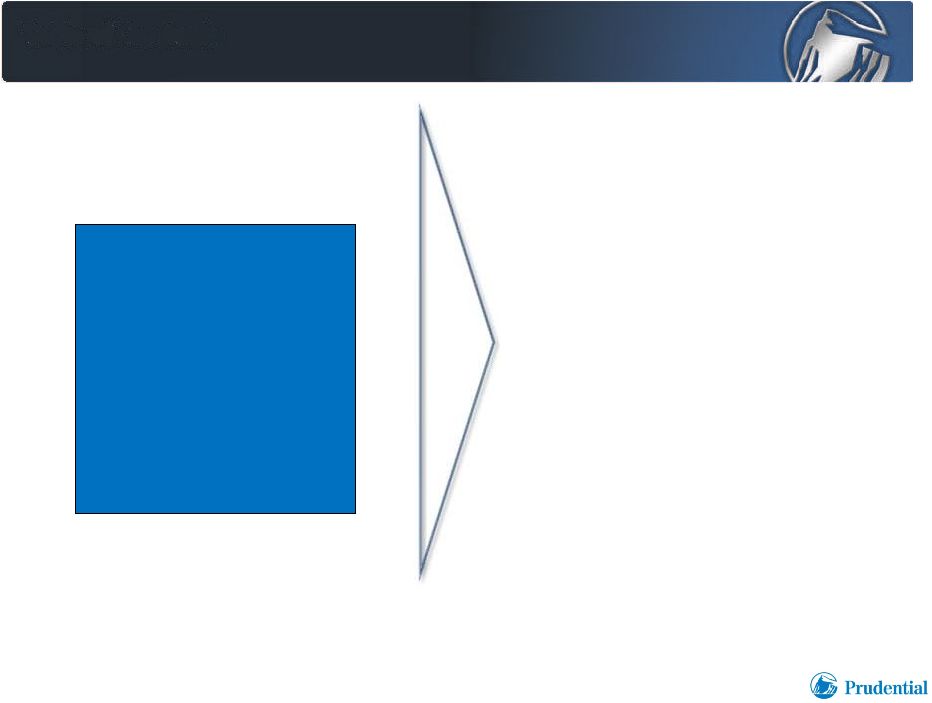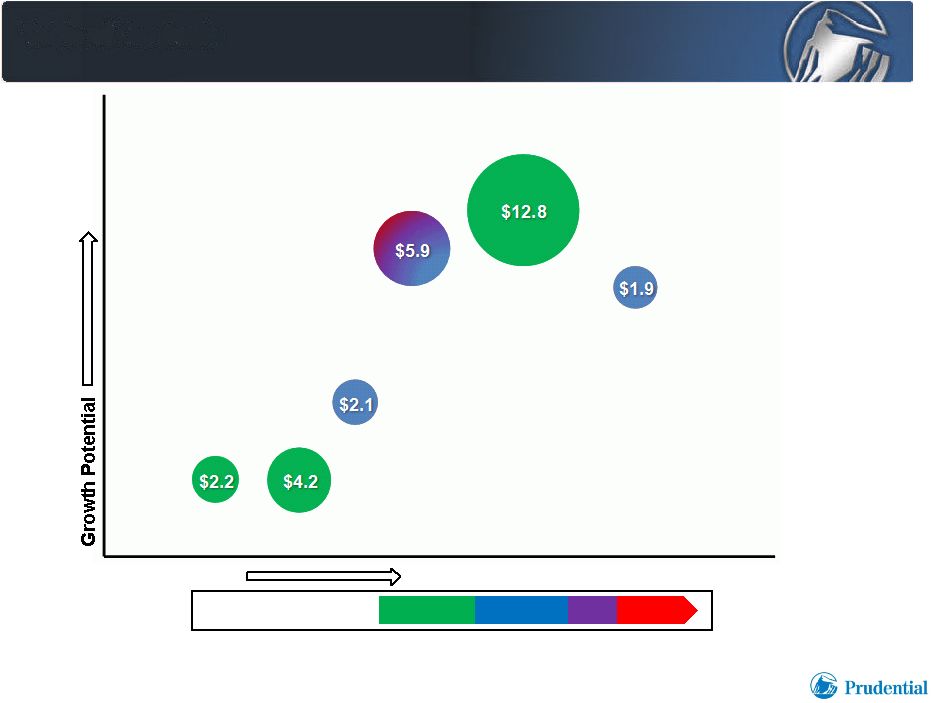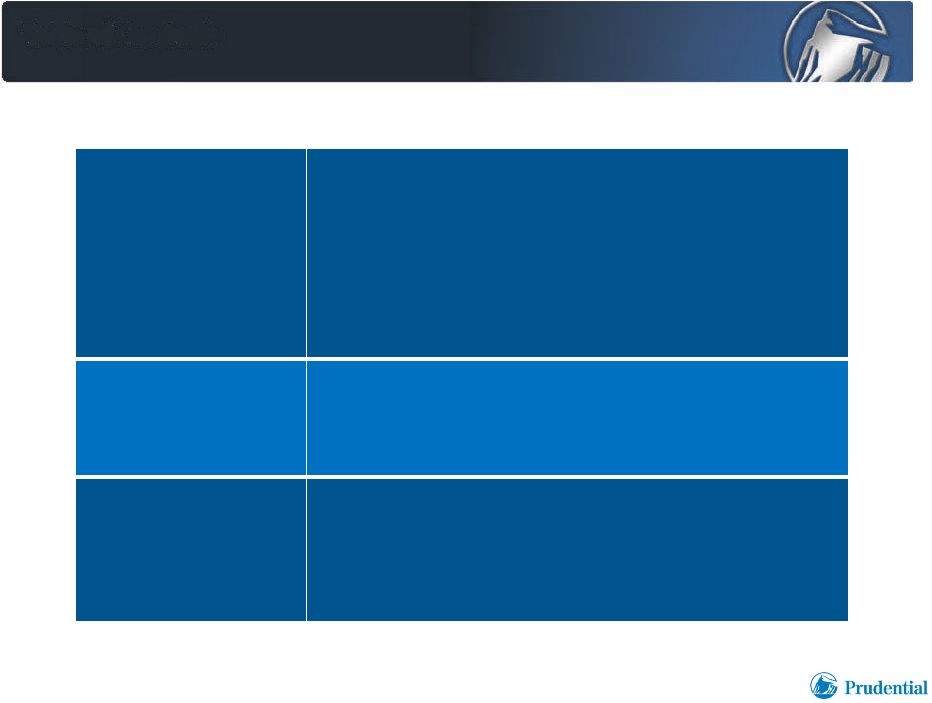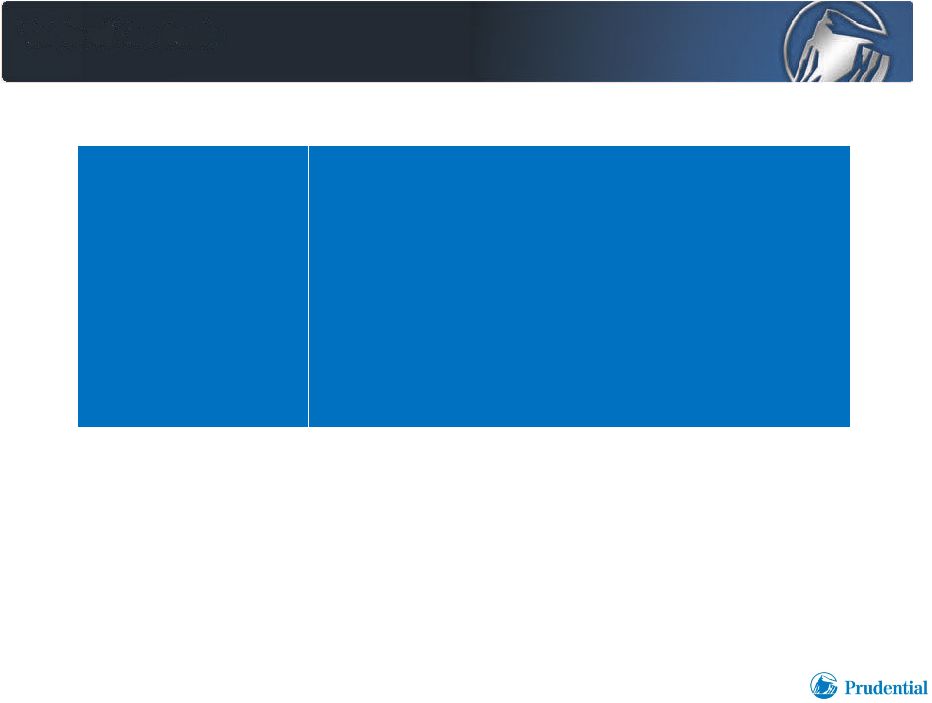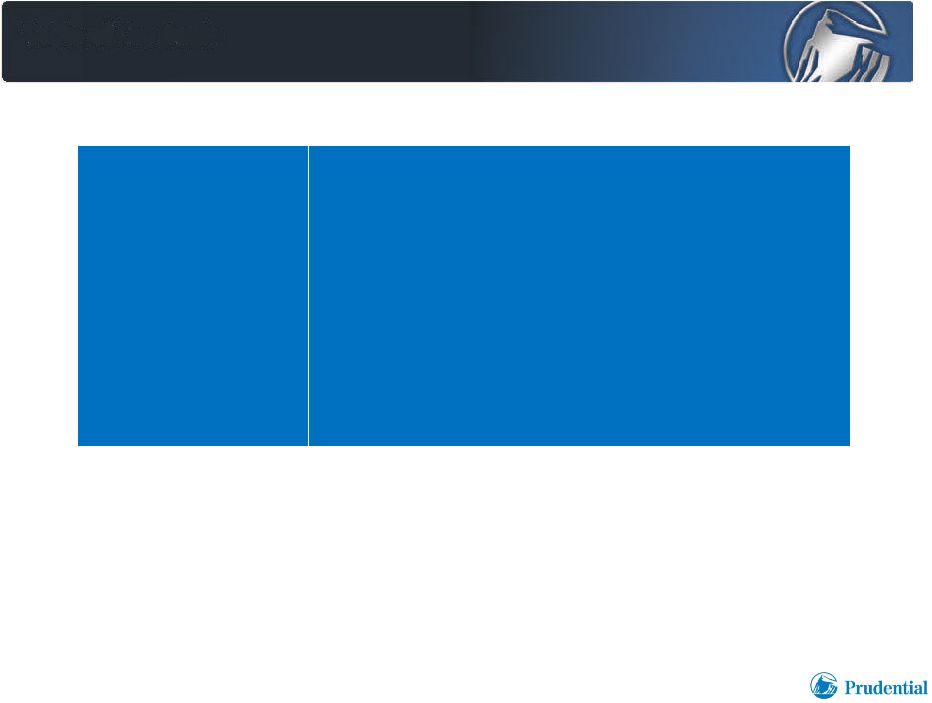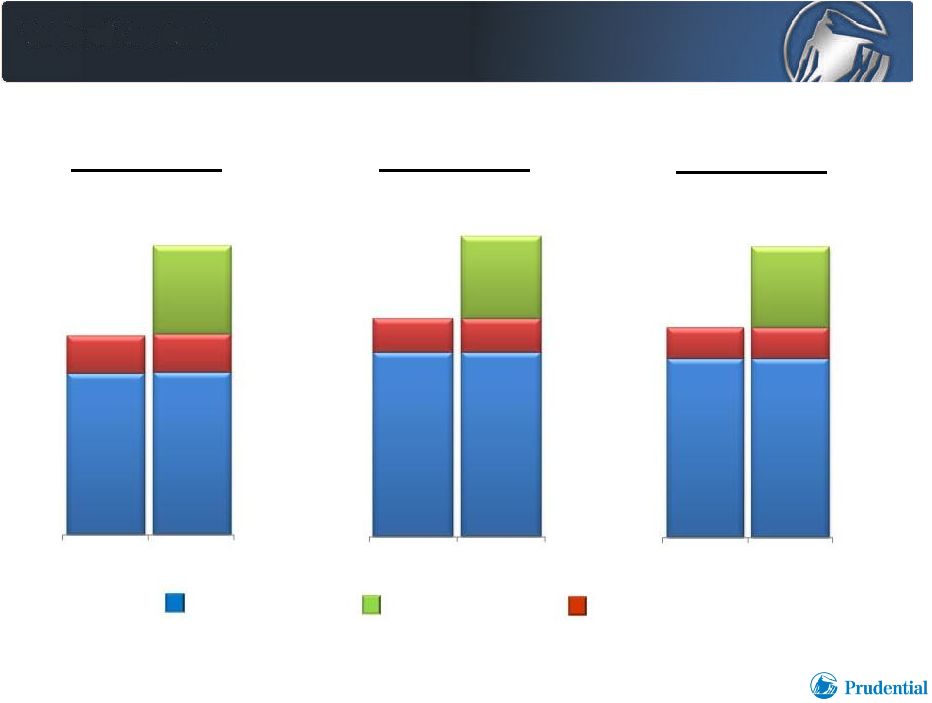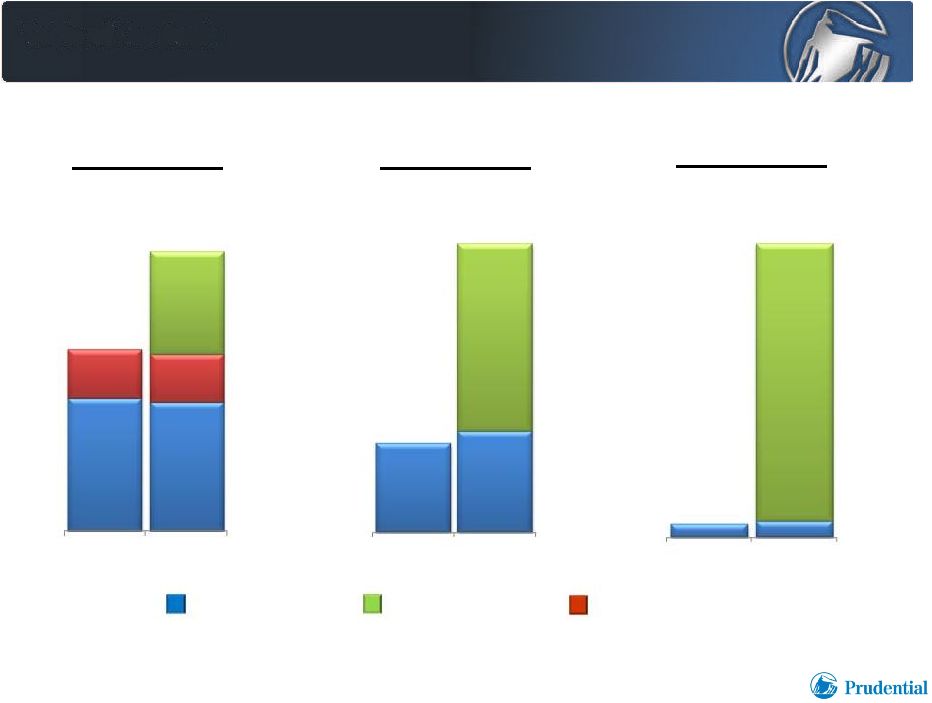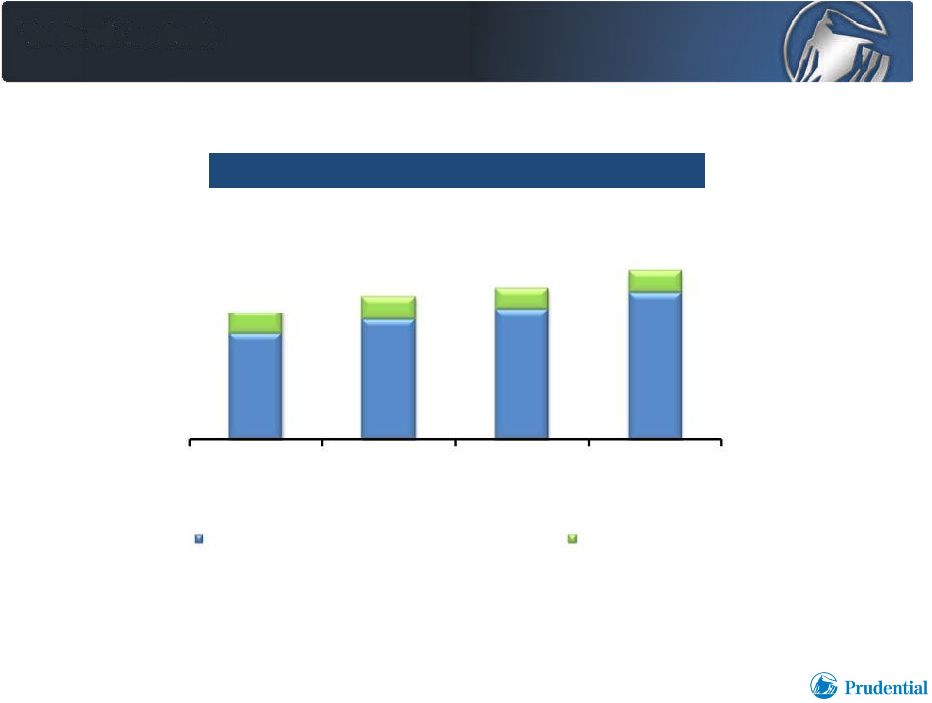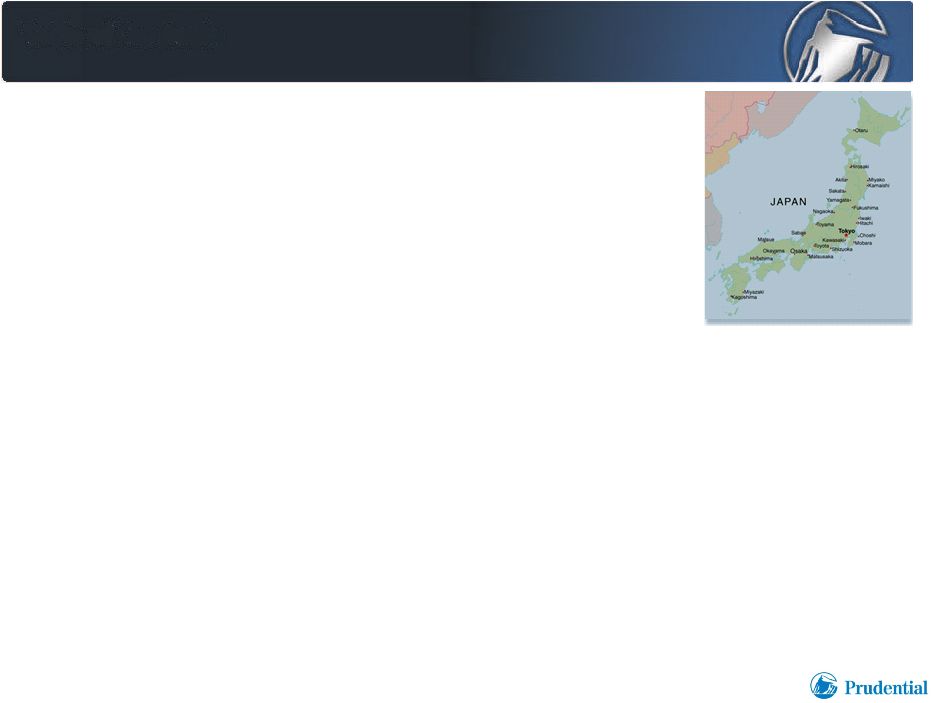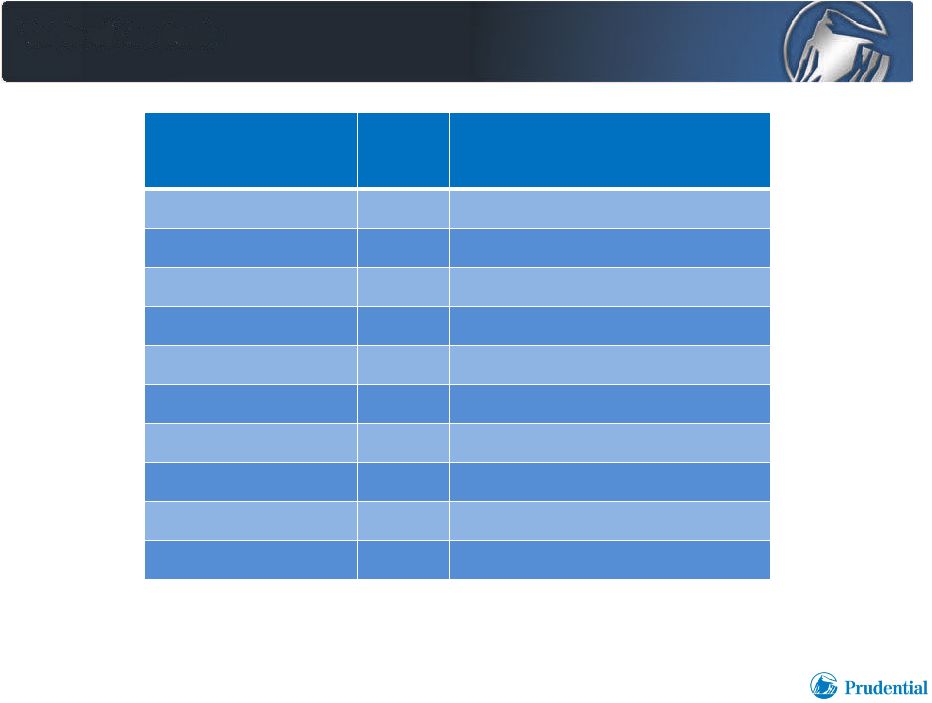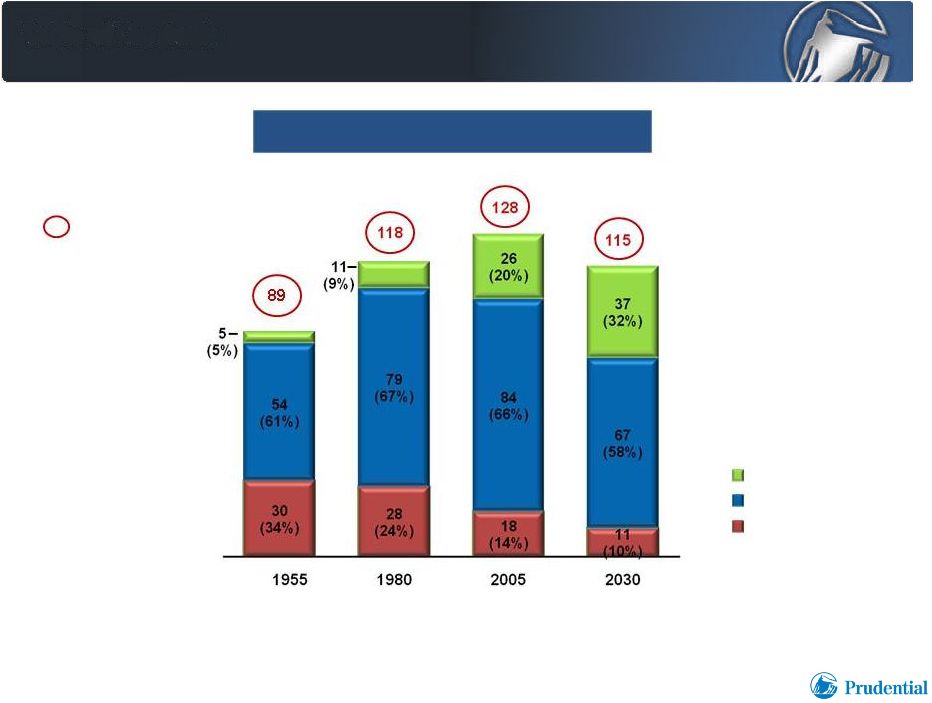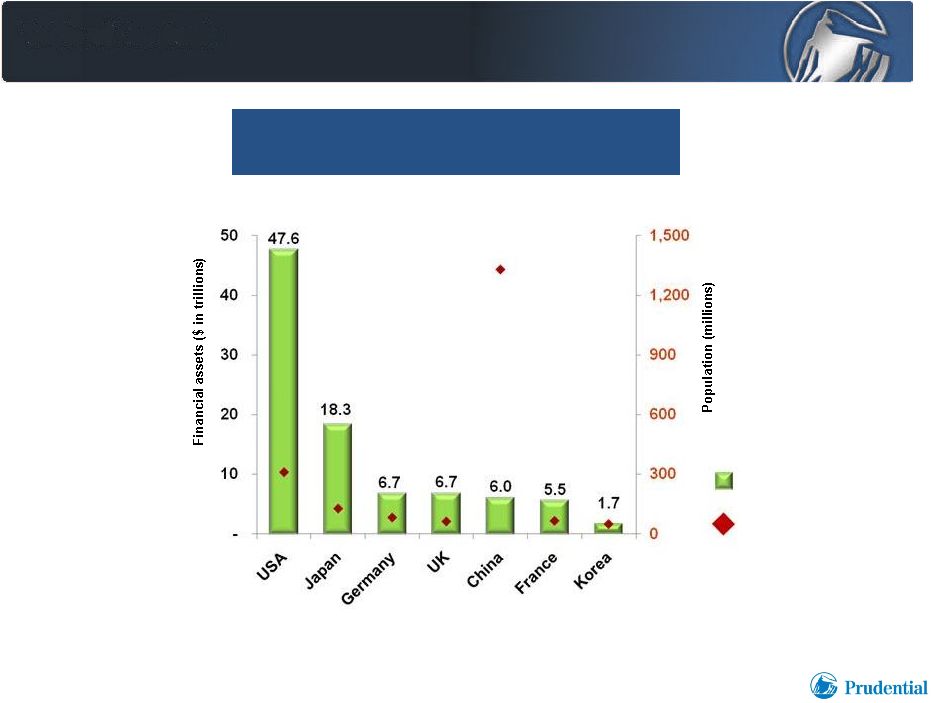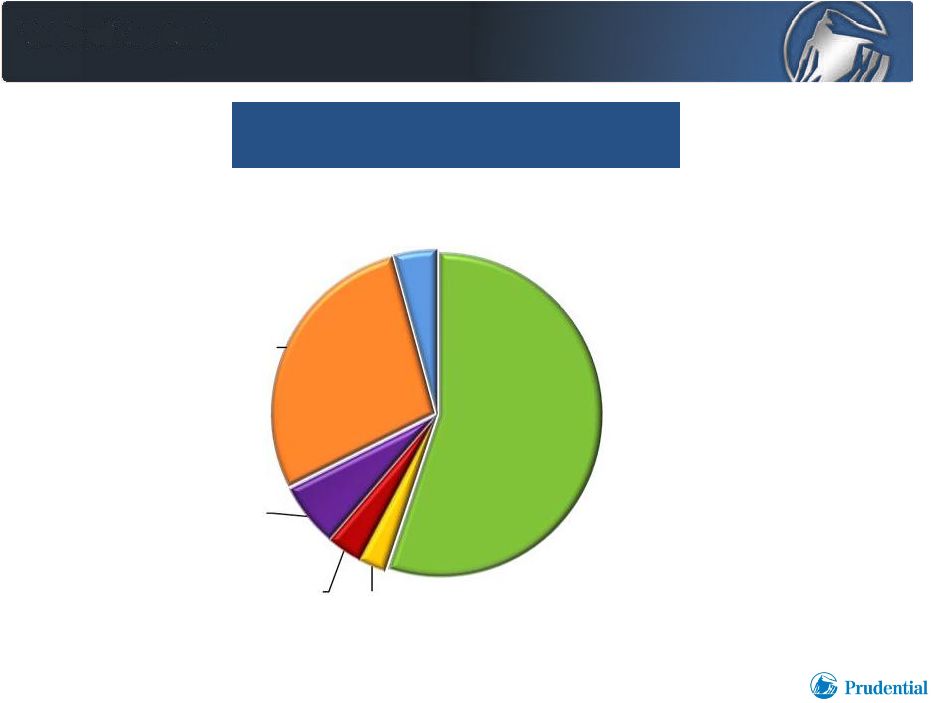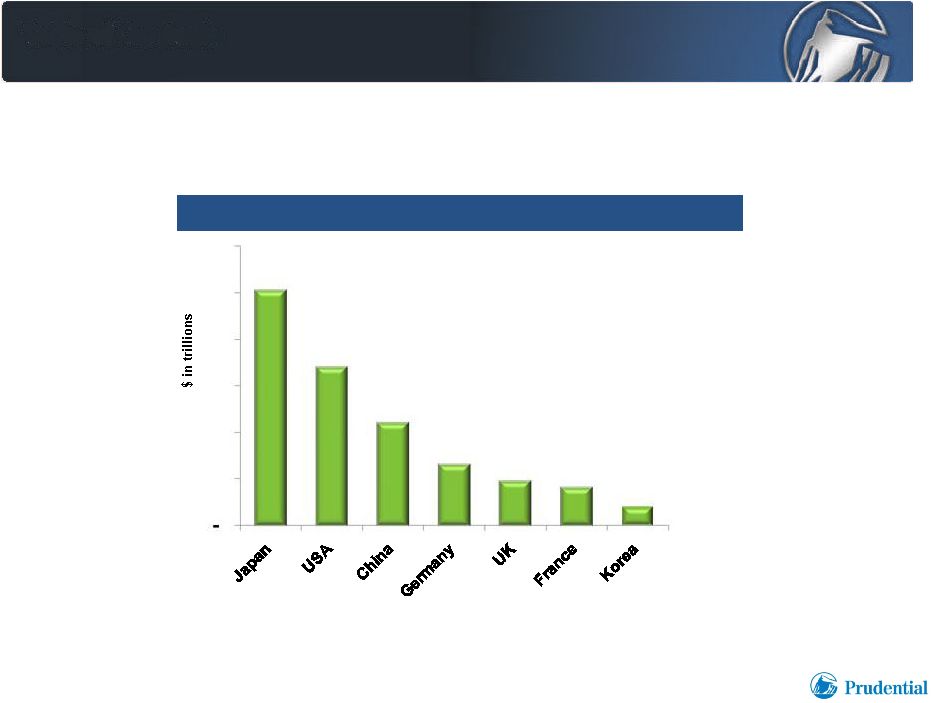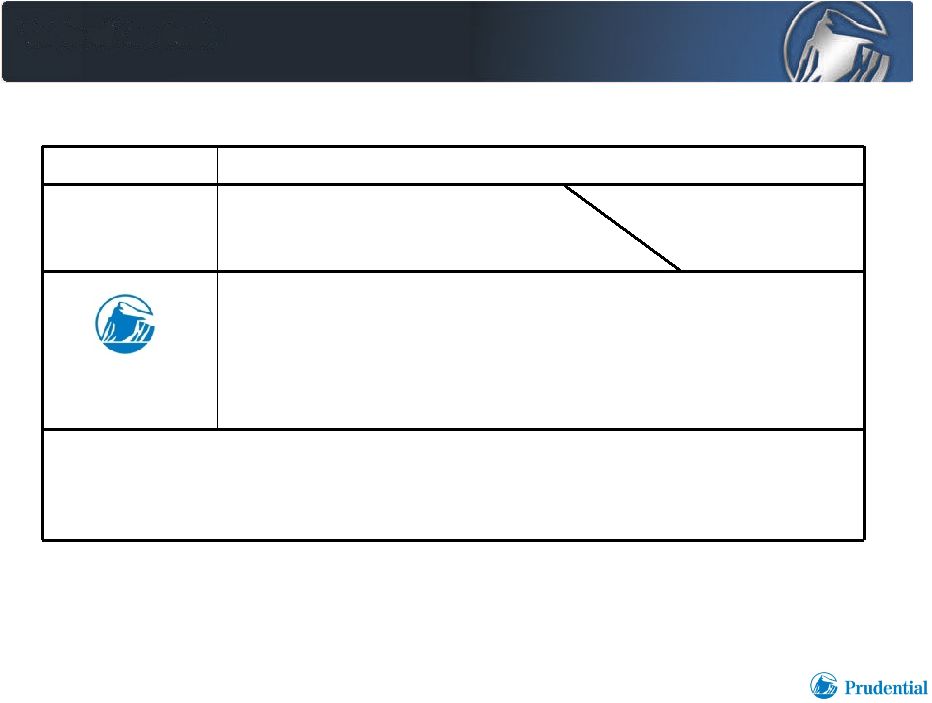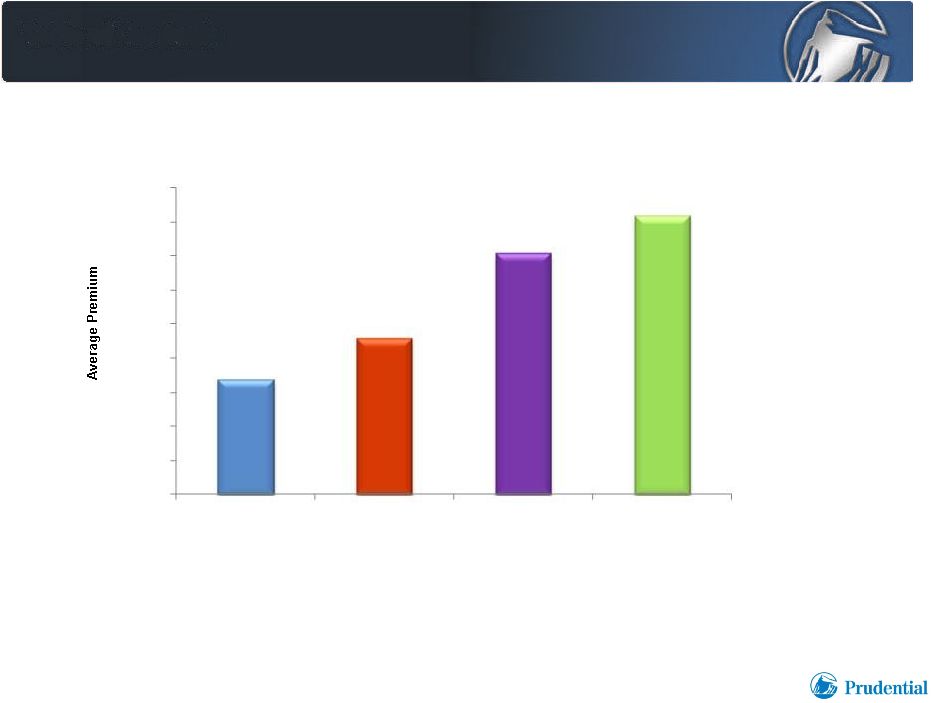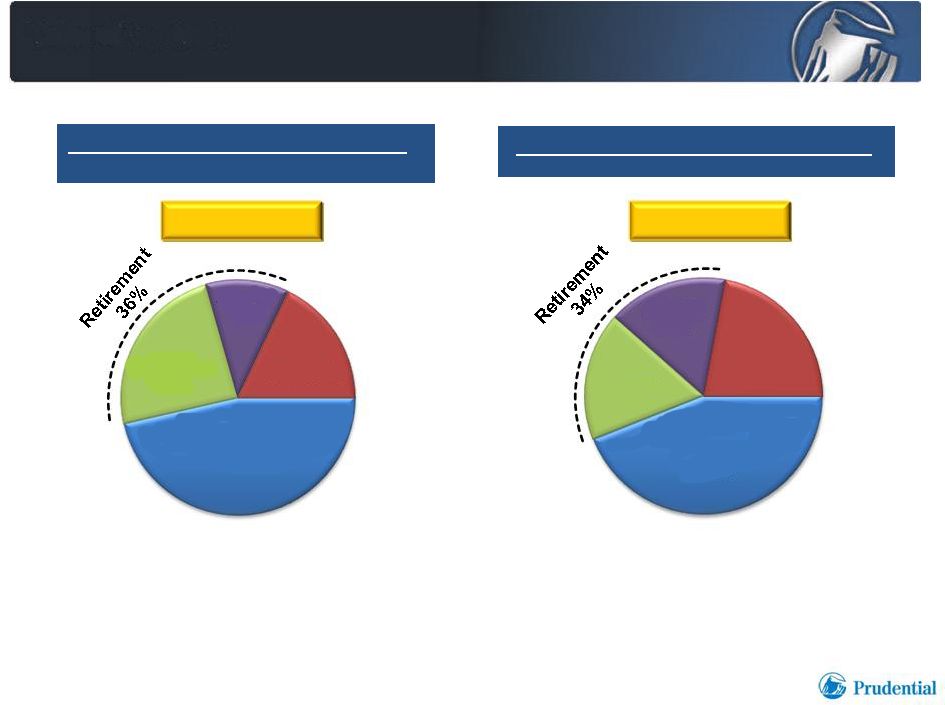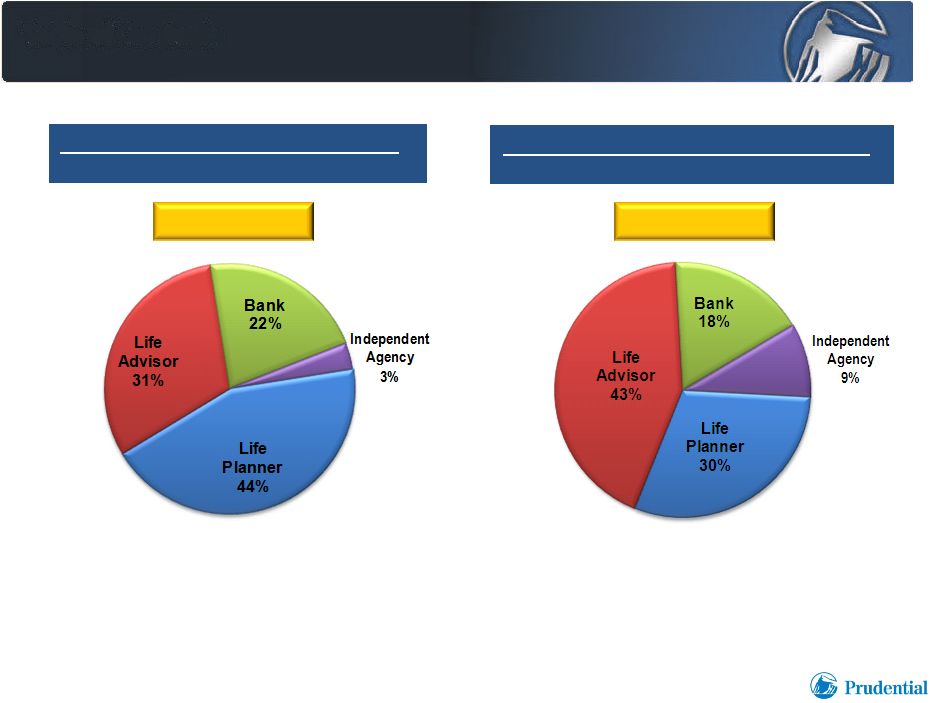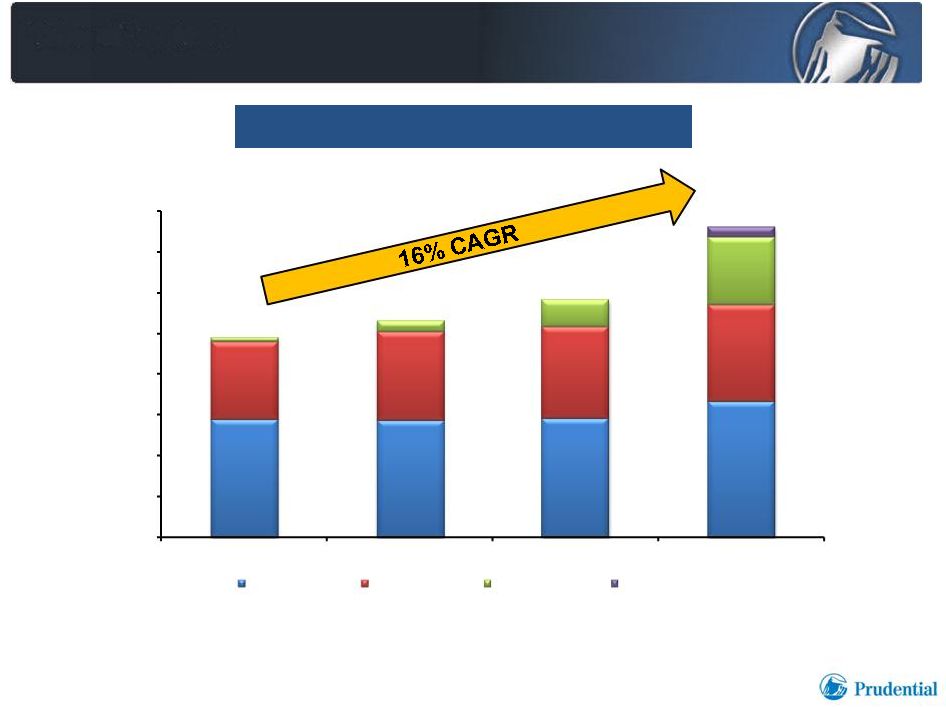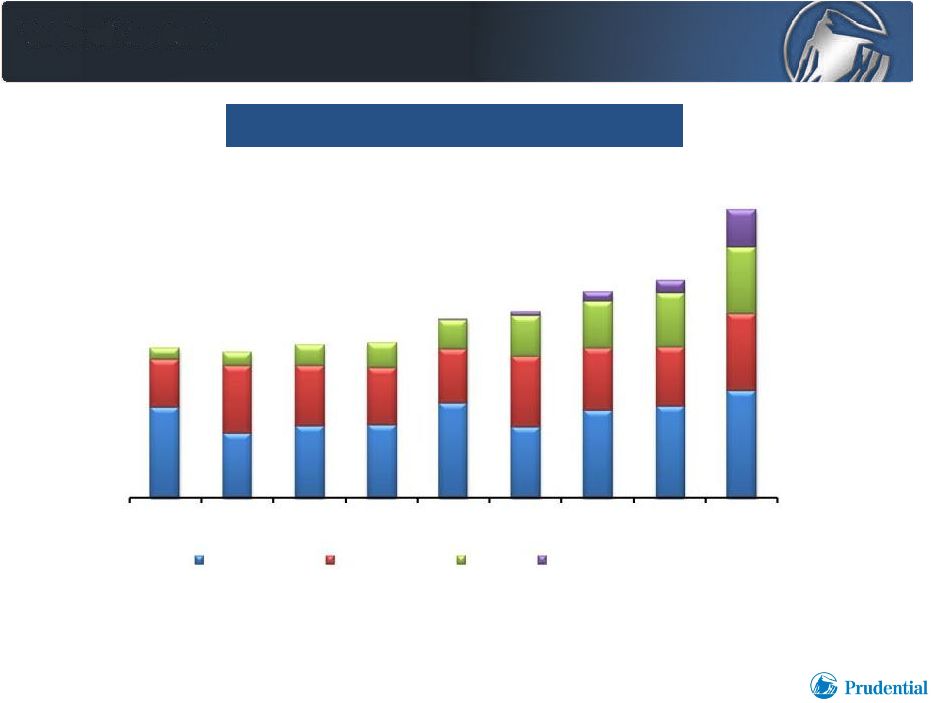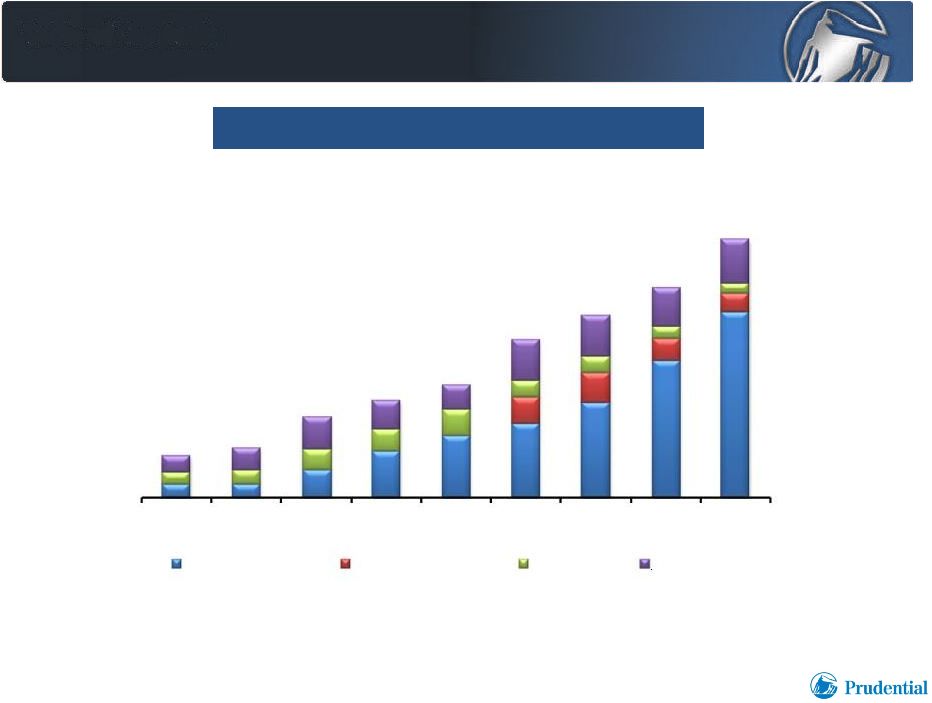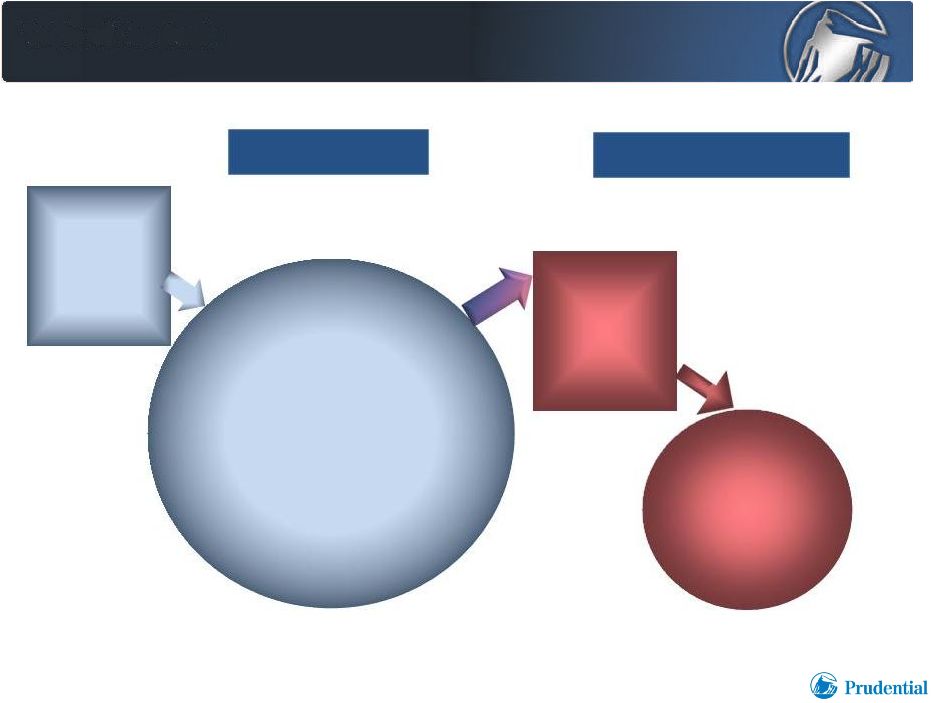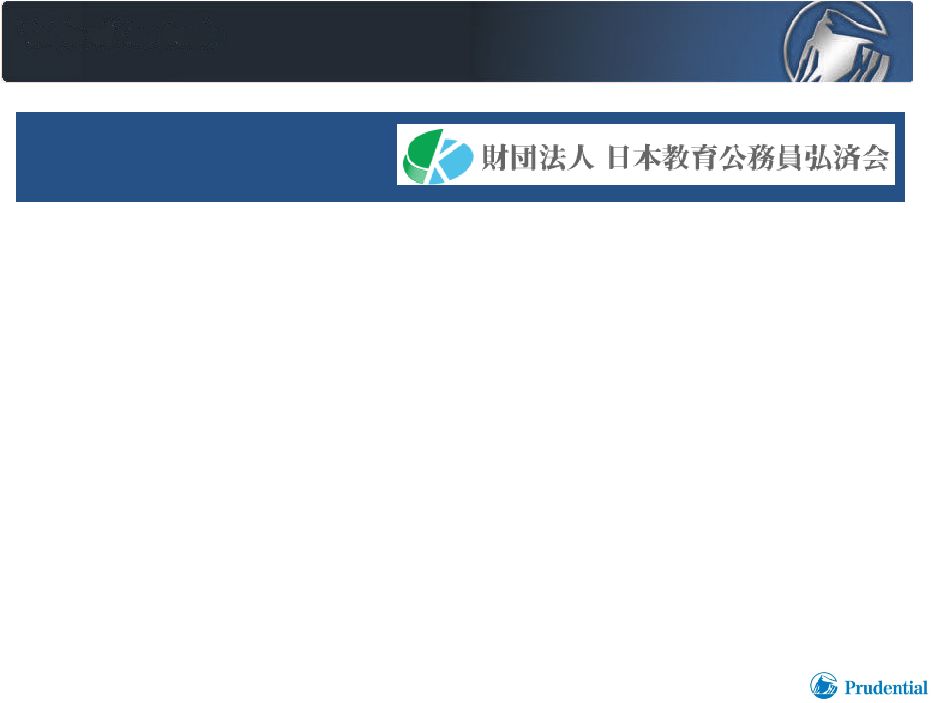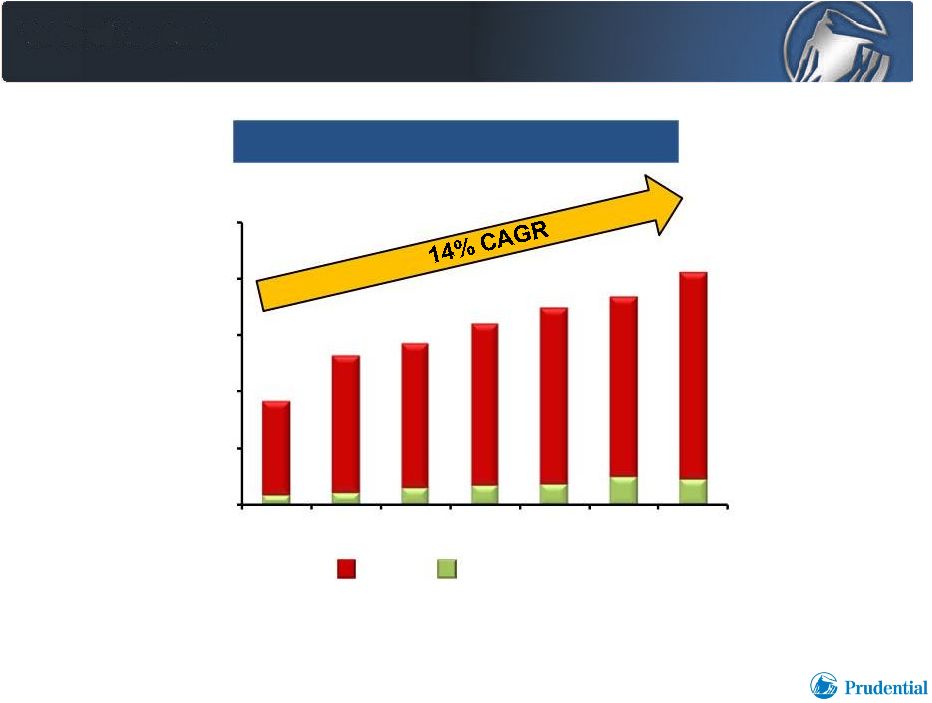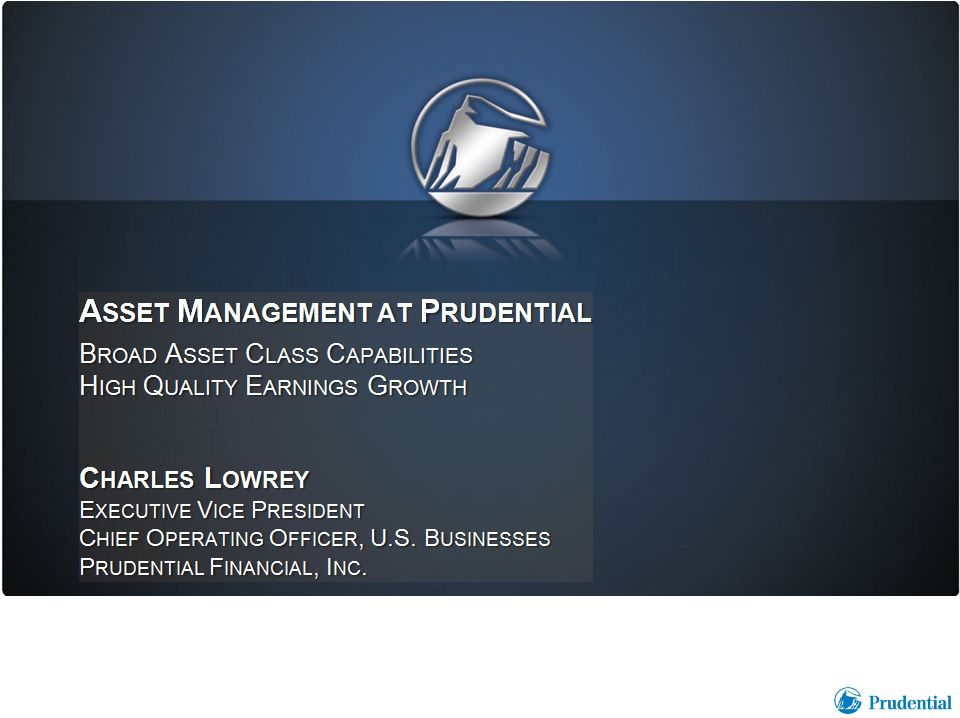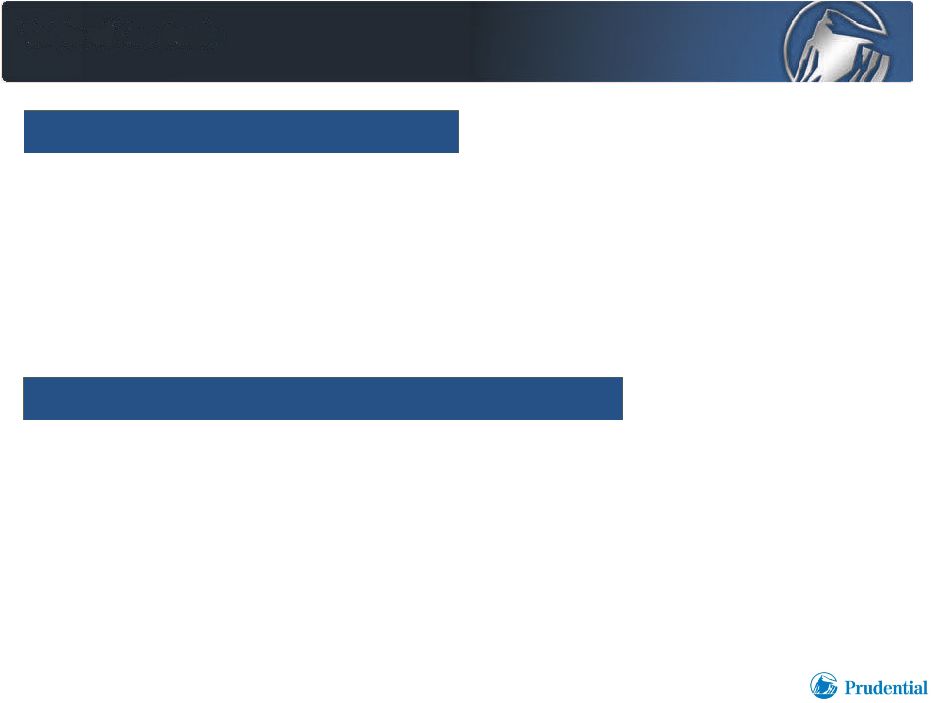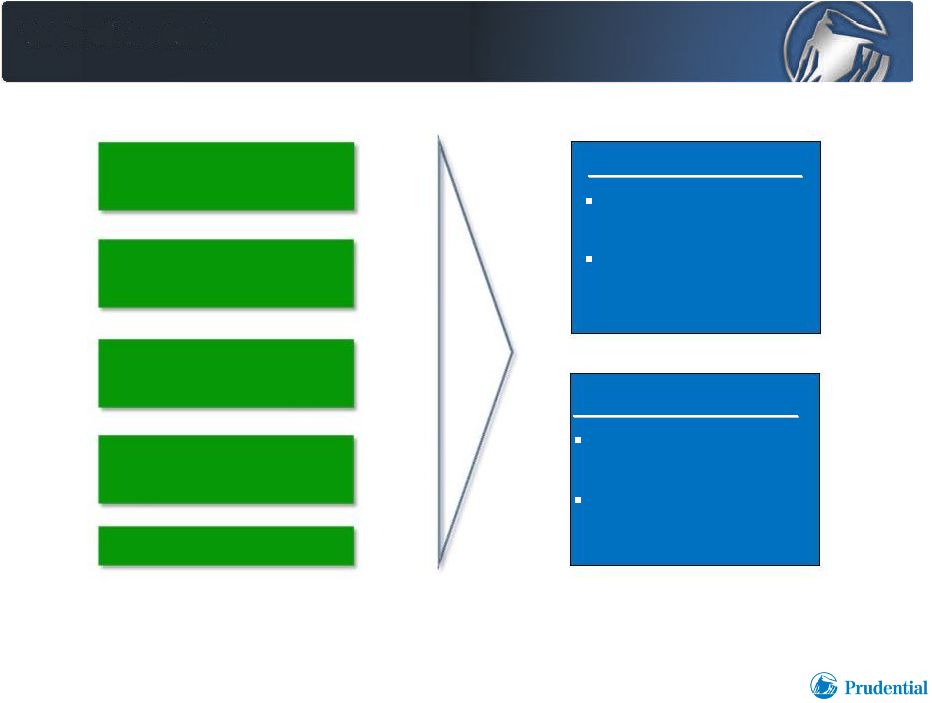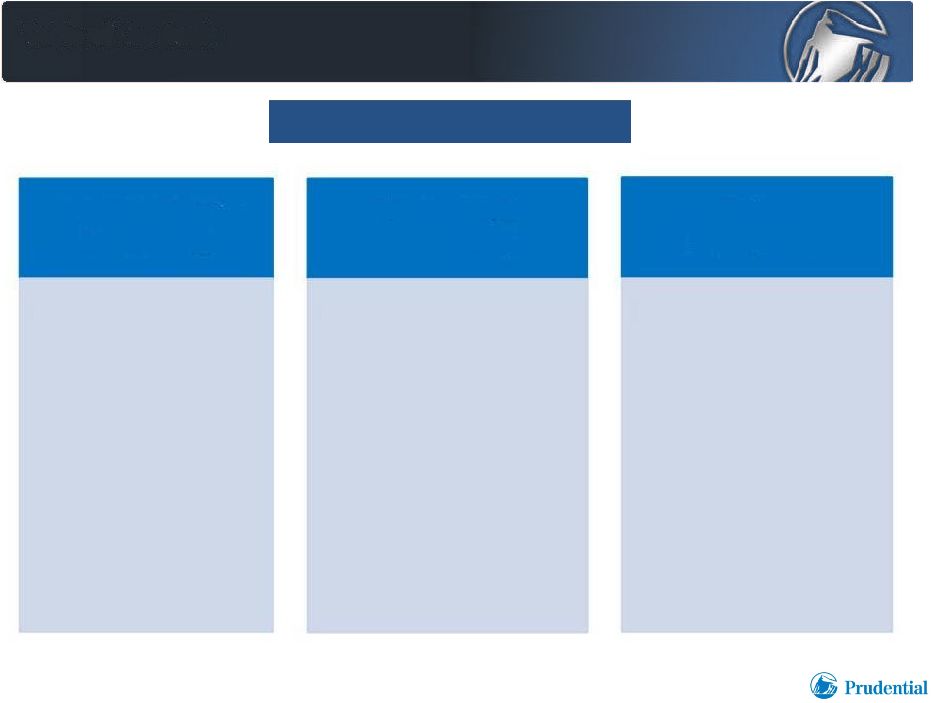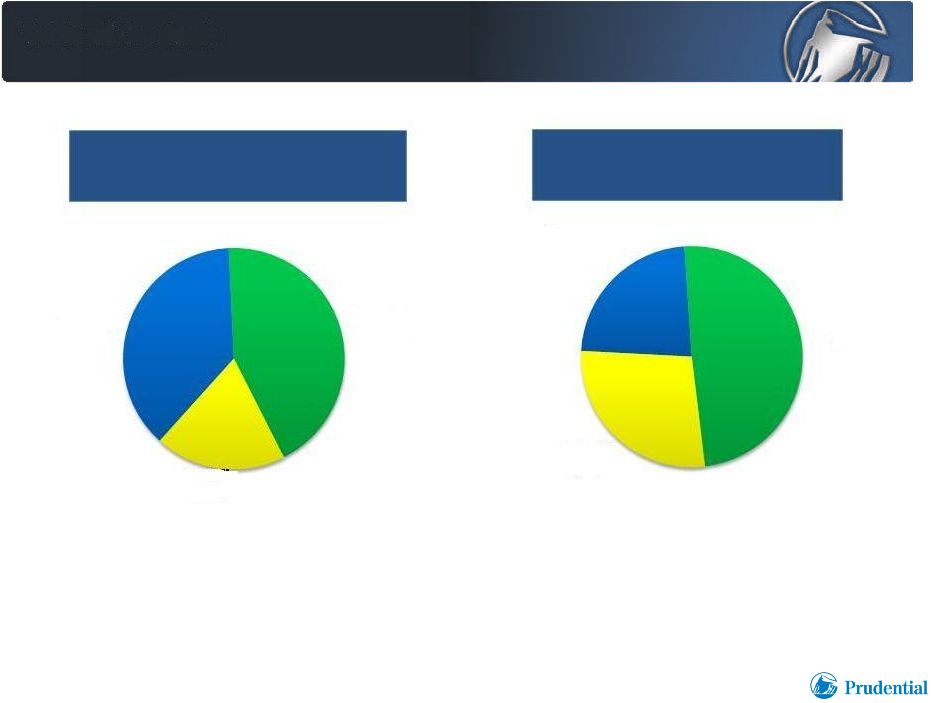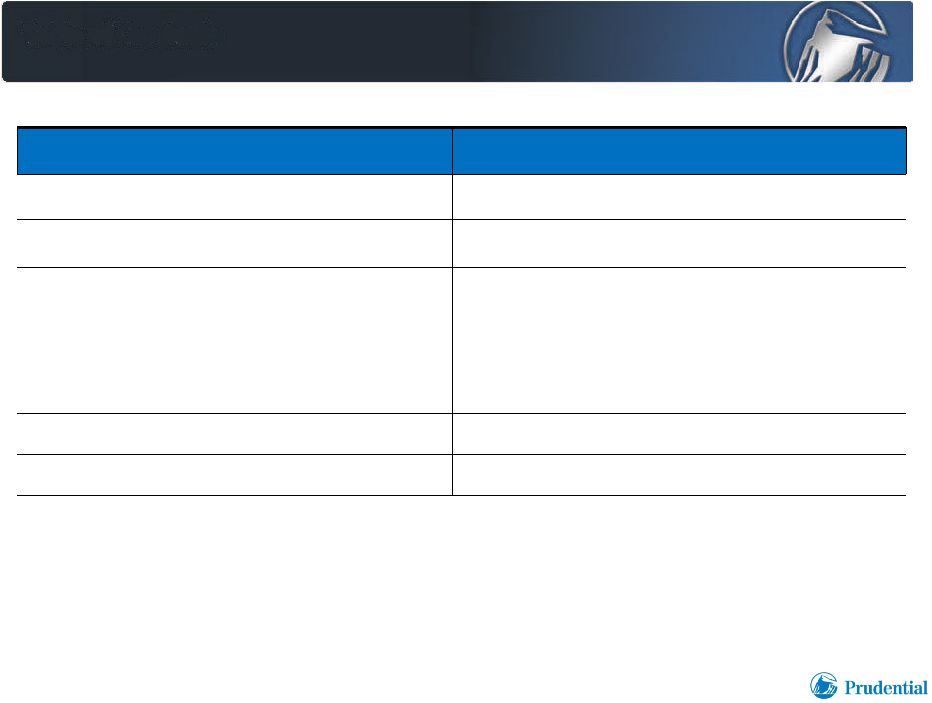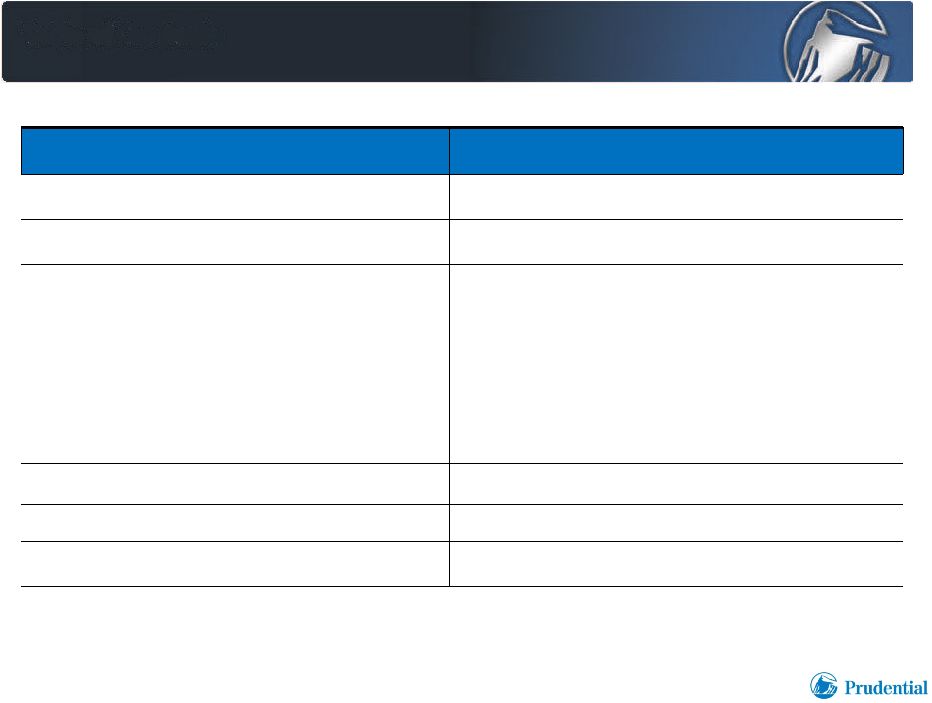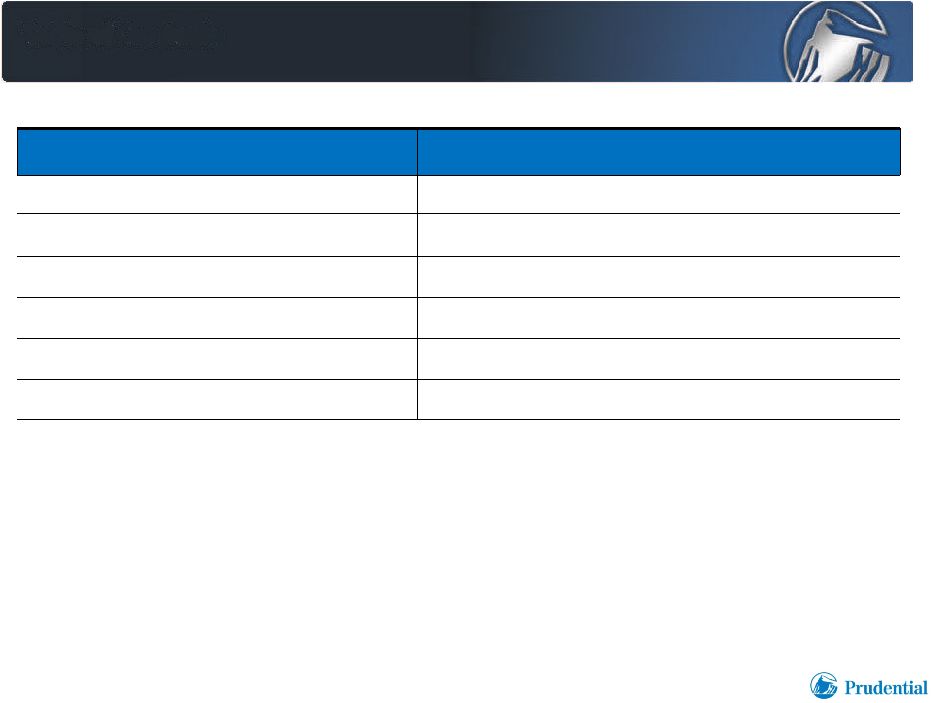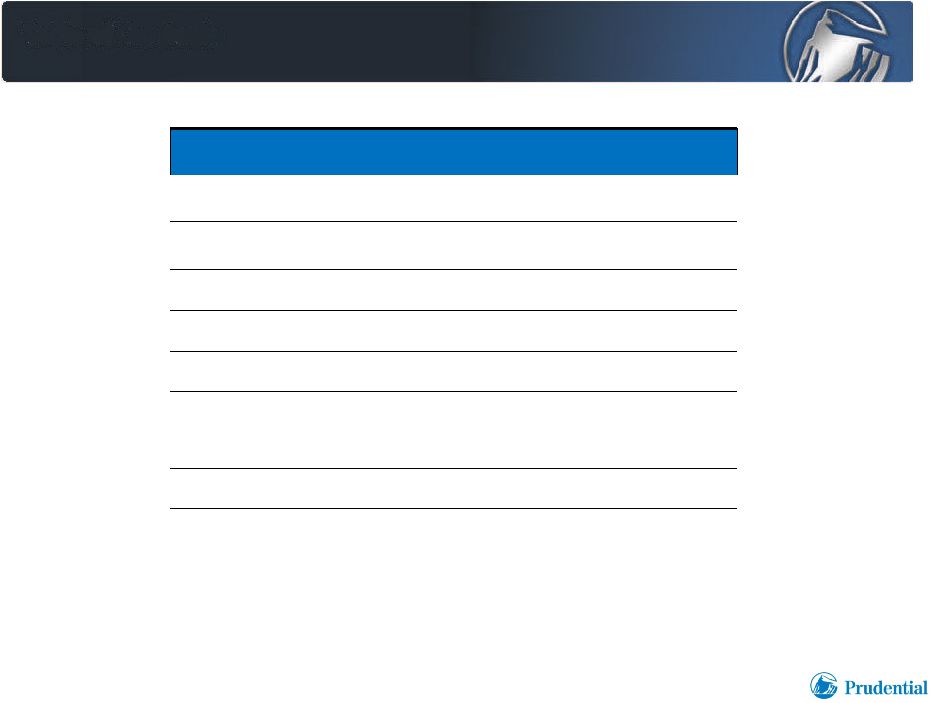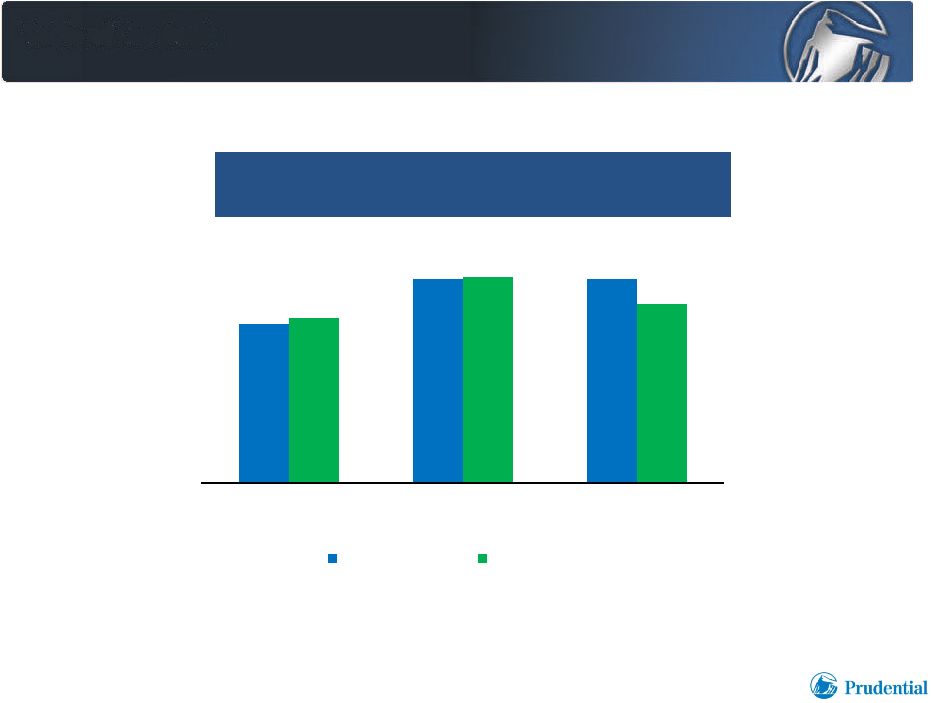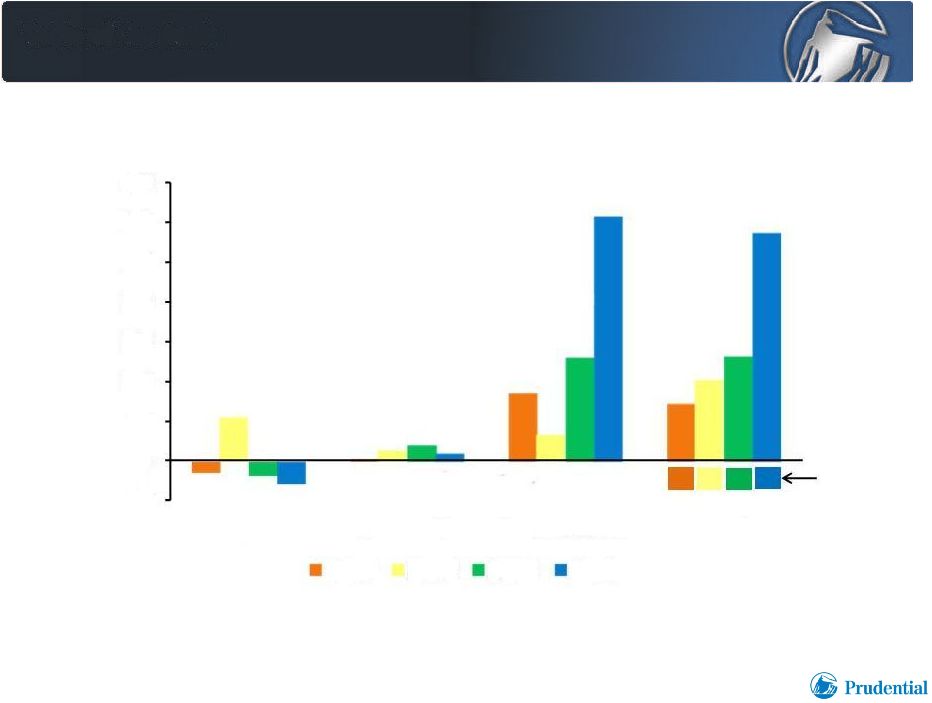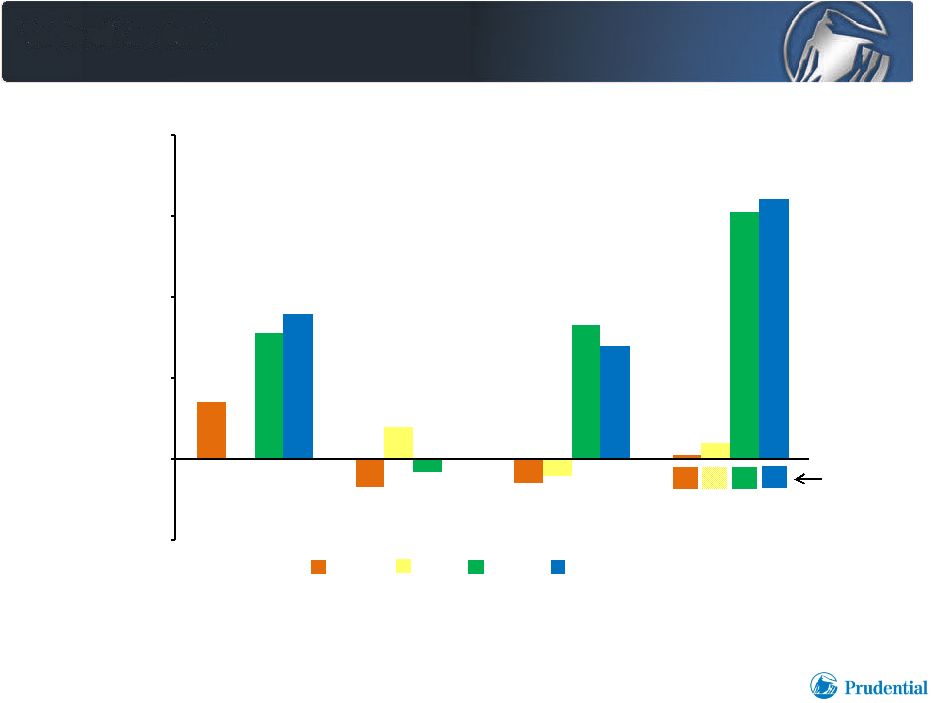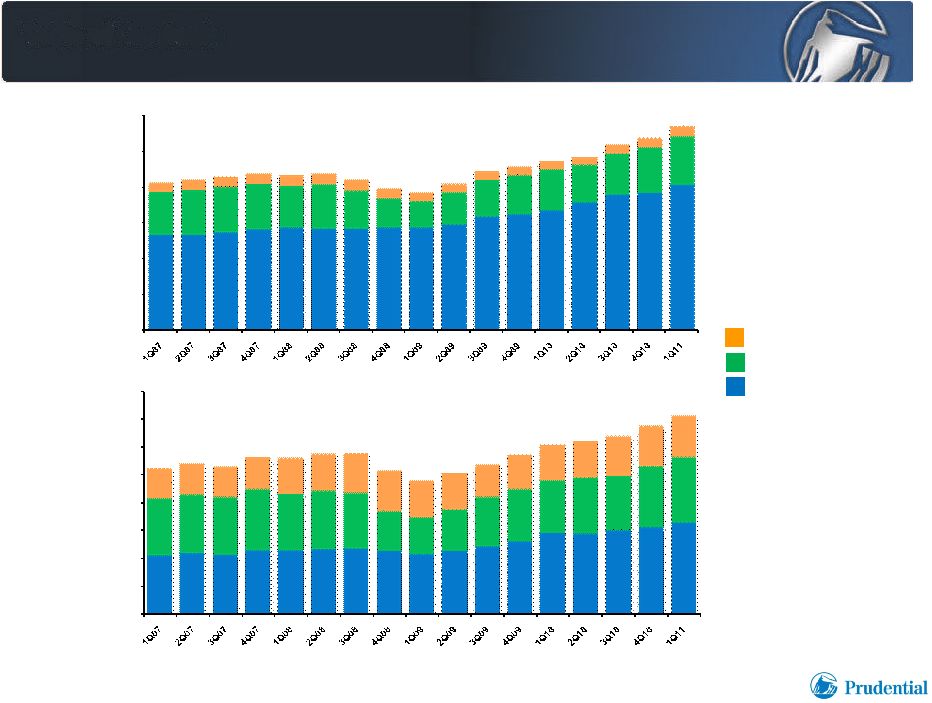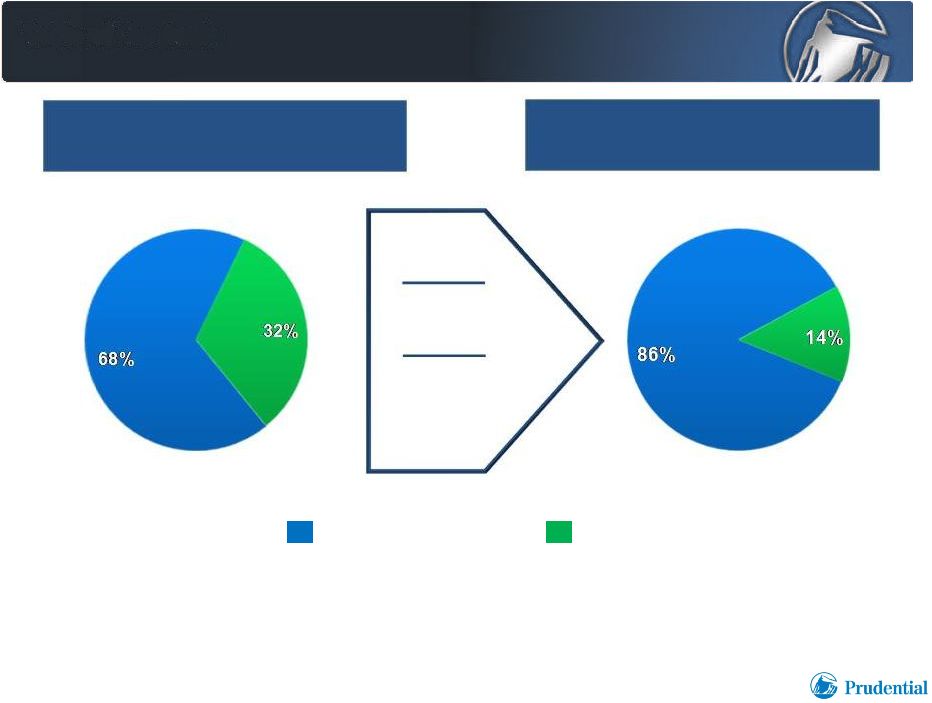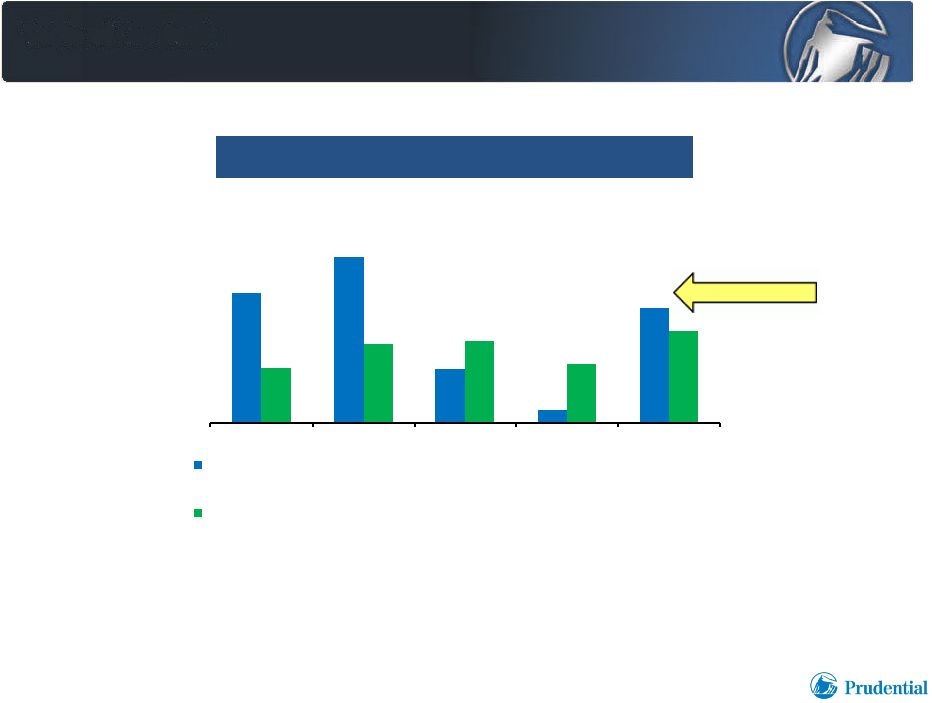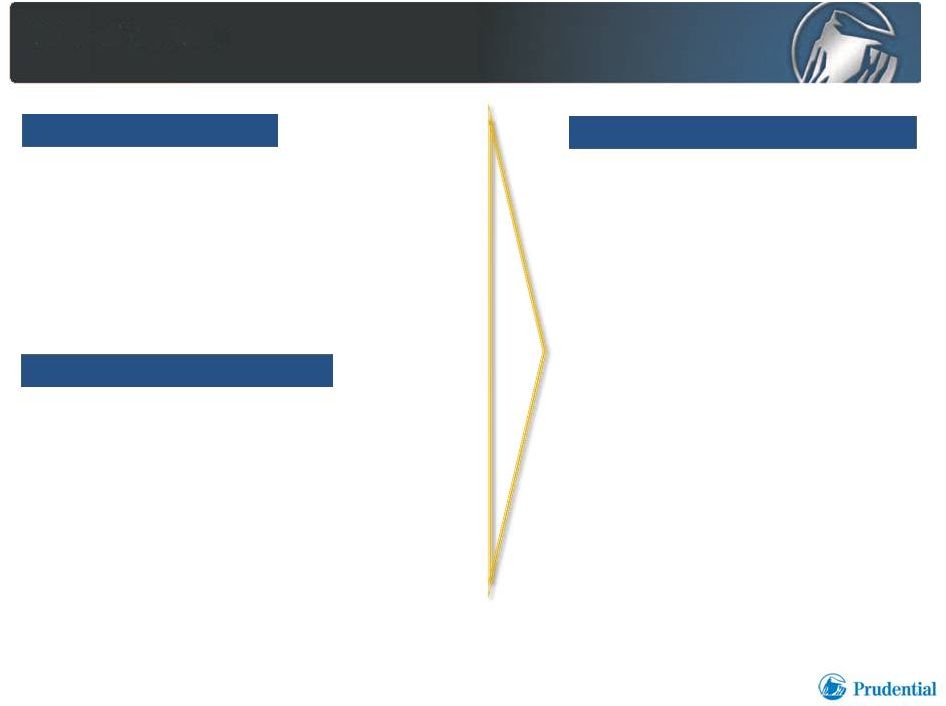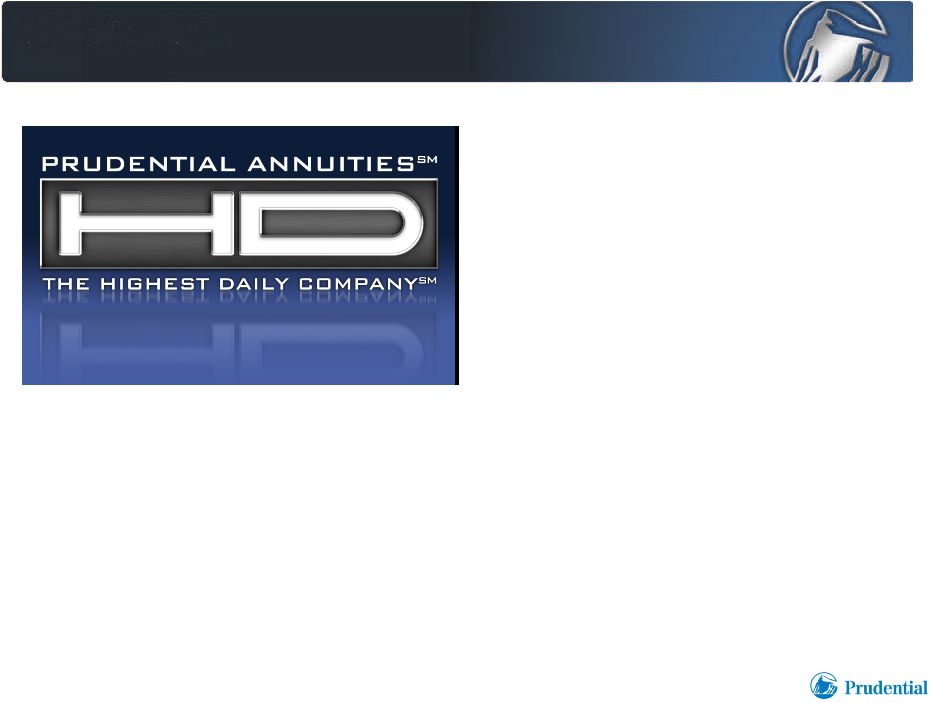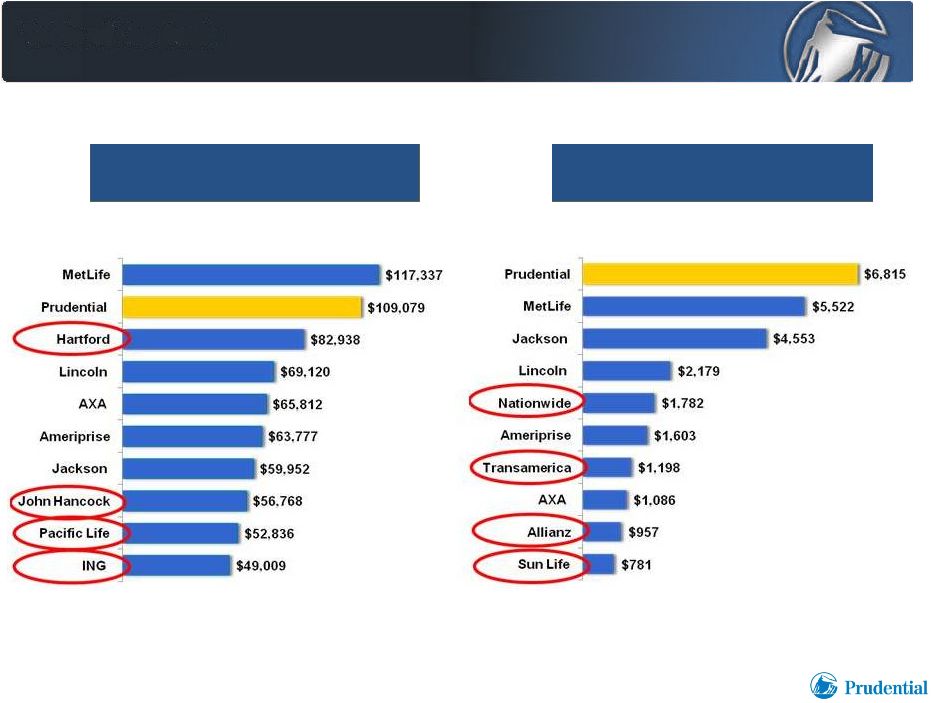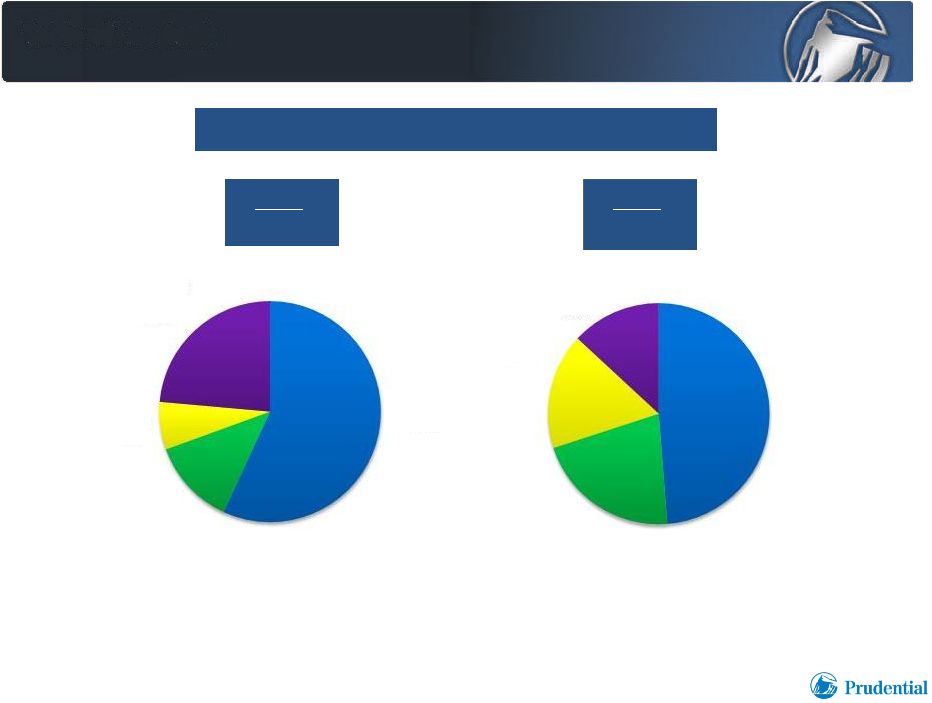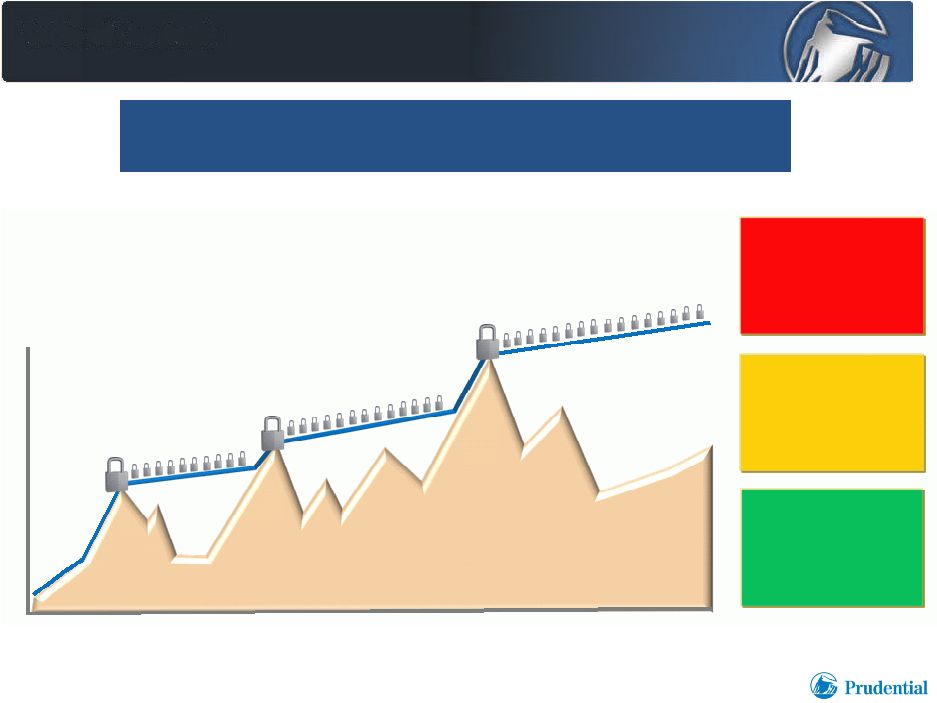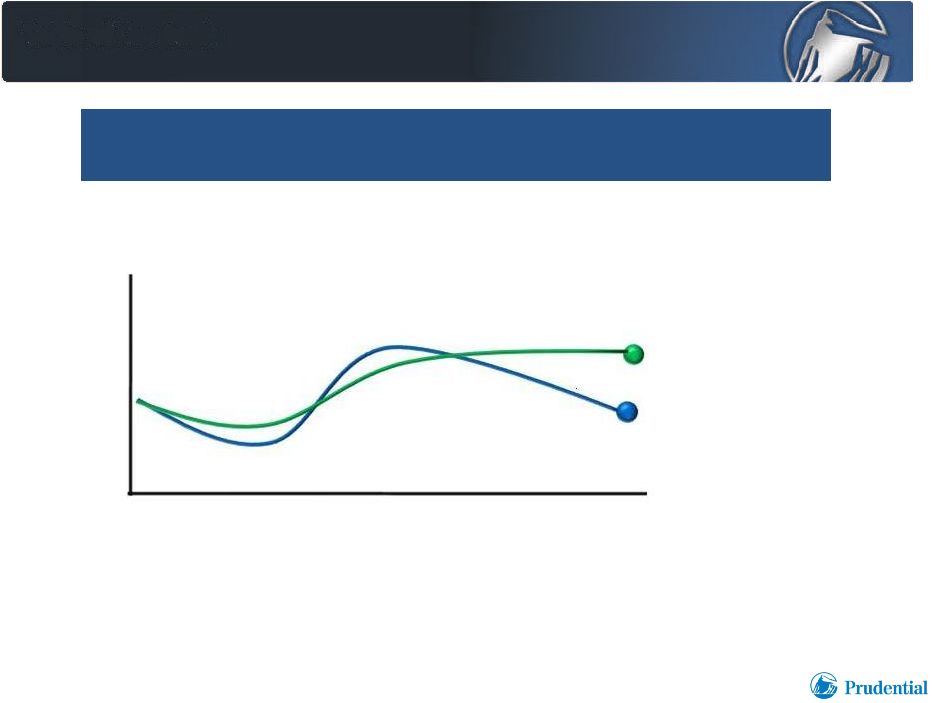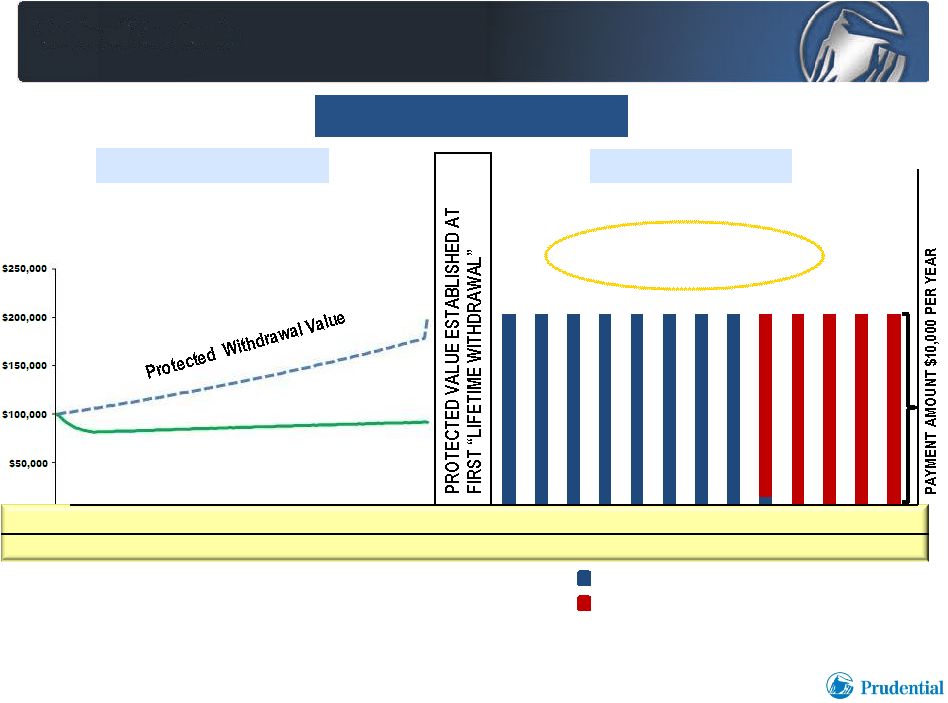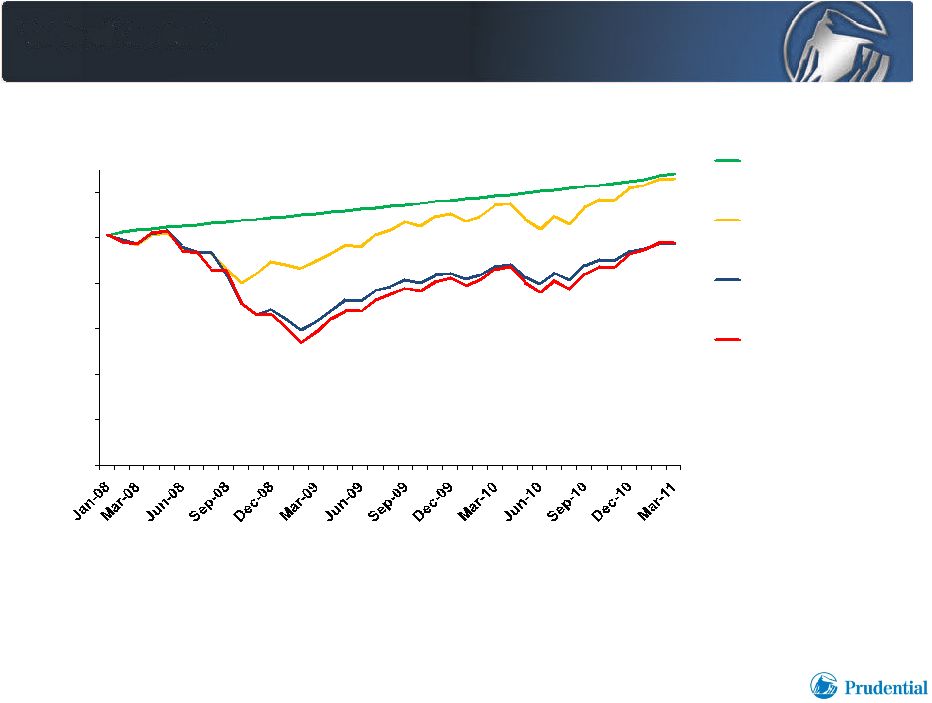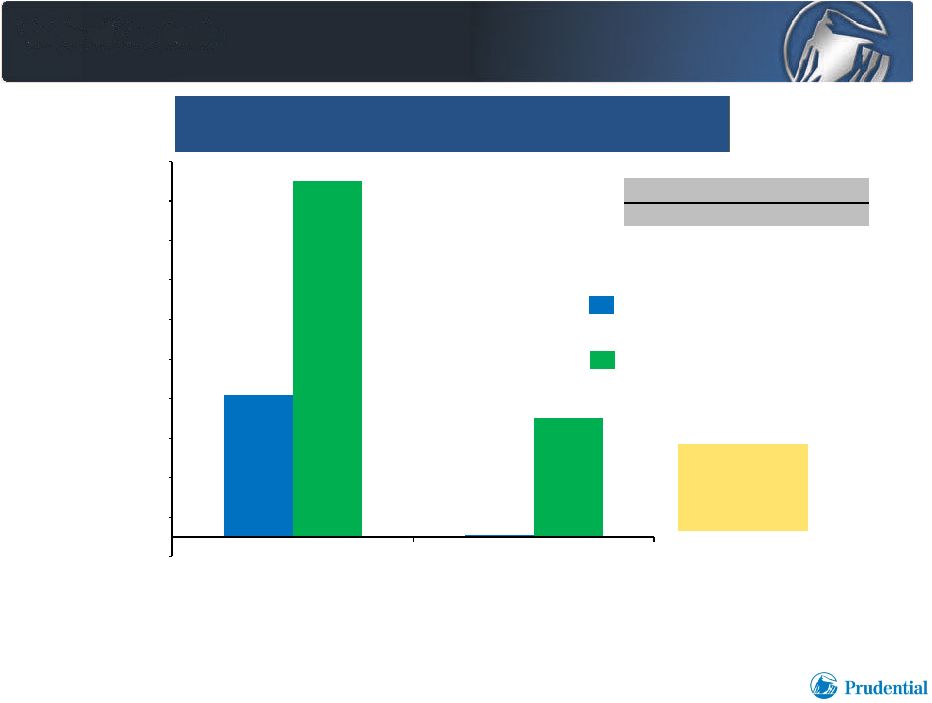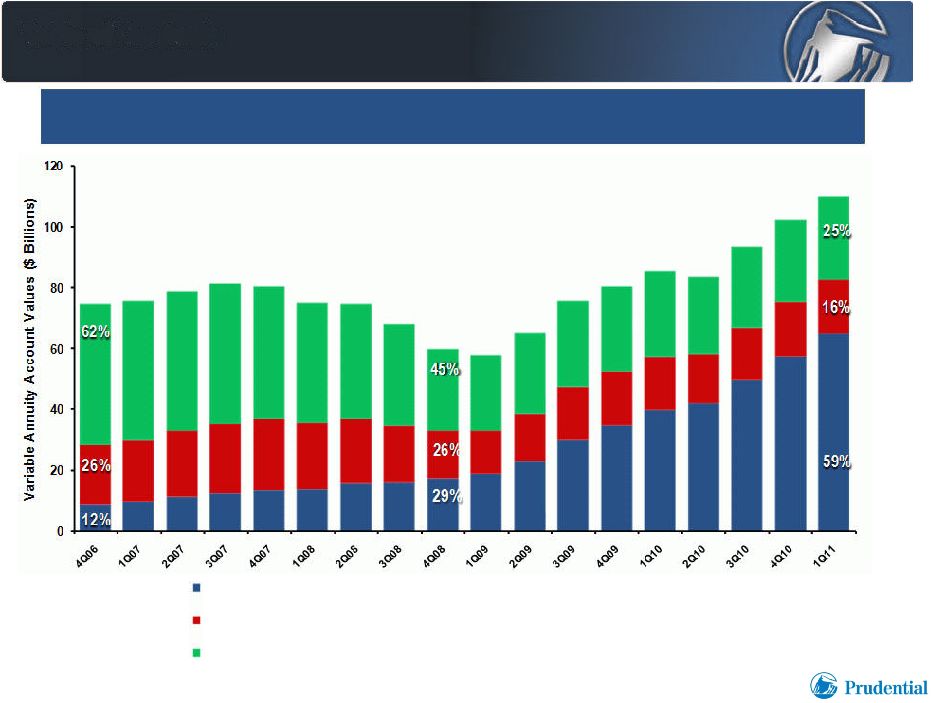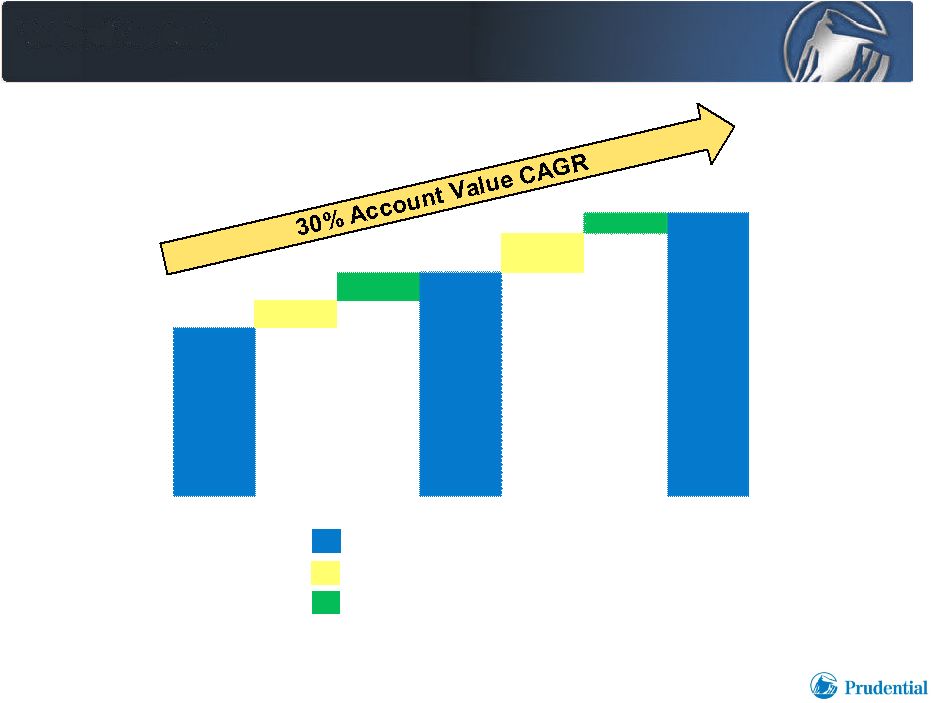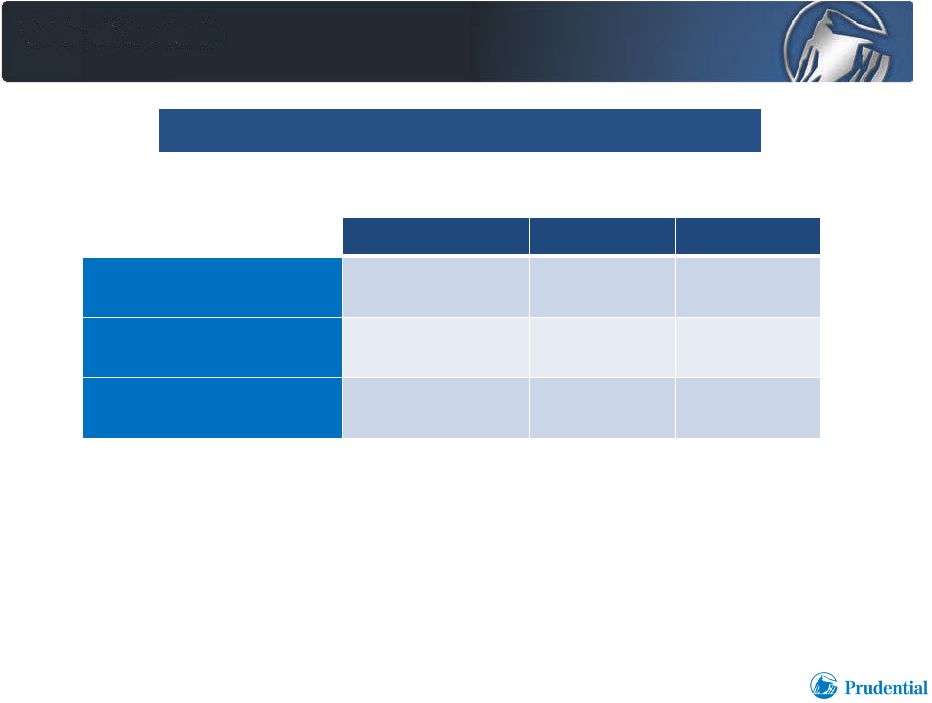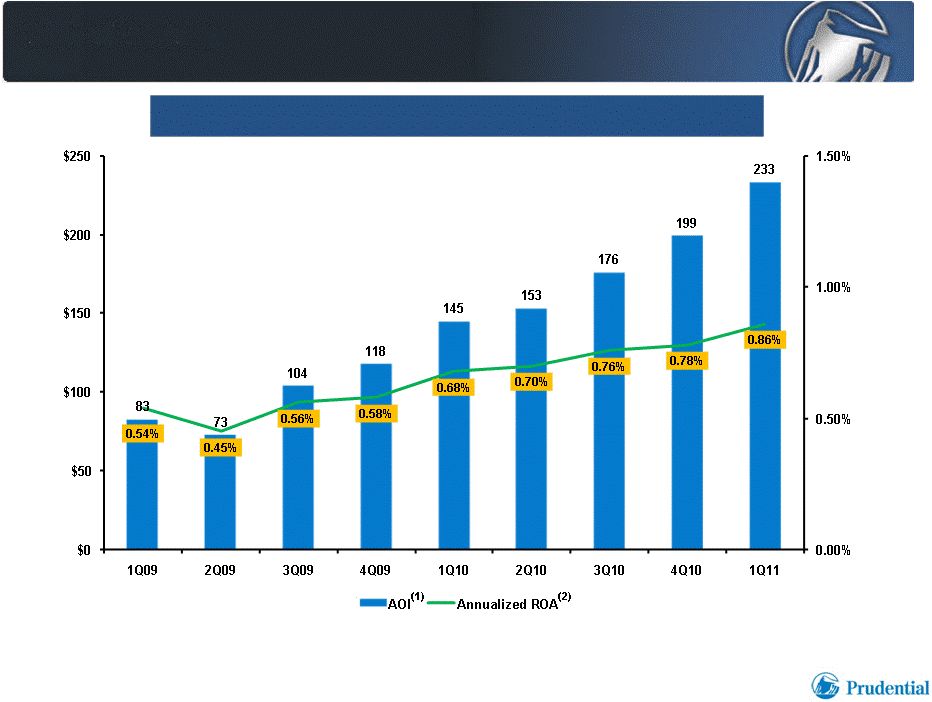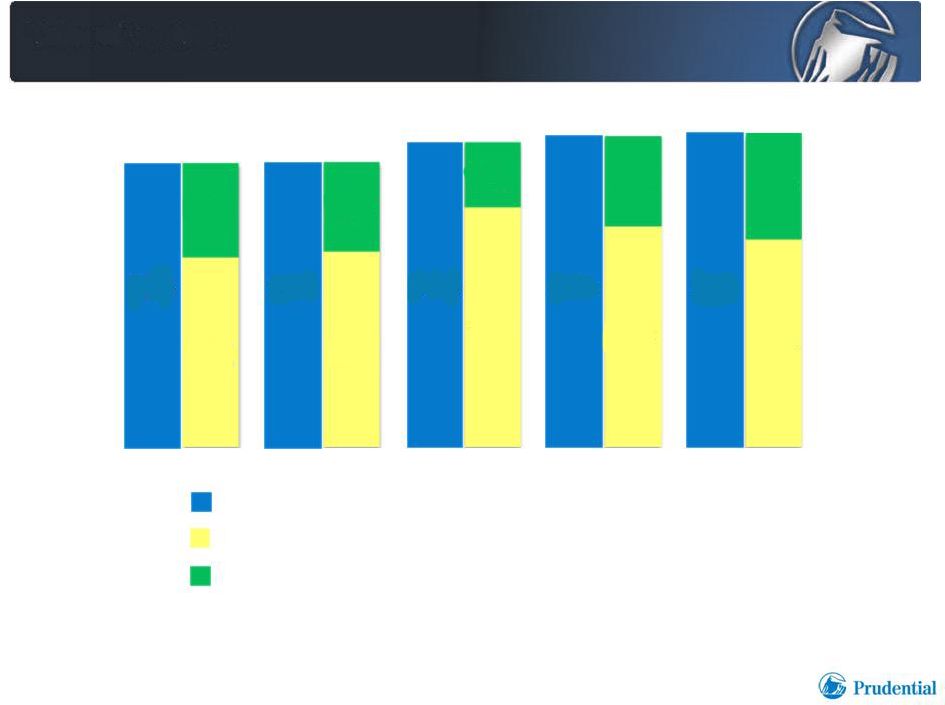Investor Day 6.9.2011 1 Forward-Looking Statements Forward-Looking Statements Certain of the statements included in this presentation constitute forward-looking statements within the meaning of the U. S. Private Securities Litigation Reform Act of 1995. It is possible that actual results may differ materially from any expectations or predictions expressed in this presentation. Words such as “expects,” “believes,” “anticipates,” “includes,” “plans,” “assumes,” “estimates,” “projects,” “intends,” “should,” “will,” “shall,” or variations of such words are generally part of forward-looking statements. Forward-looking statements are made based on management’s current expectations and beliefs concerning future developments and their potential effects upon Prudential Financial, Inc. and its subsidiaries. There can be no assurance that future developments affecting Prudential Financial, Inc. and its subsidiaries will be those anticipated by management. These forward-looking statements are not a guarantee of future performance and involve risks and uncertainties, and there are certain important factors that could cause actual results to differ, possibly materially, from expectations or estimates reflected in such forward-looking statements, including, among others: (1) general economic, market and political conditions, including the performance and fluctuations of fixed income, equity, real estate and other financial markets; (2) the availability and cost of additional debt or equity capital or external financing for our operations; (3) interest rate fluctuations or prolonged periods of low interest rates; (4) the degree to which we choose not to hedge risks, or the potential ineffectiveness or insufficiency of hedging or risk management strategies we do implement, with regard to variable annuity or other product guarantees; (5) any inability to access our credit facilities; (6) reestimates of our reserves for future policy benefits and claims; (7) differences between actual experience regarding mortality, morbidity, persistency, surrender experience, interest rates or market returns and the assumptions we use in pricing our products, establishing liabilities and reserves or for other purposes; (8) changes in our assumptions related to deferred policy acquisition costs, valuation of business acquired or goodwill; (9) changes in assumptions for retirement expense; (10) changes in our financial strength or credit ratings; (11) statutory reserve requirements associated with term and universal life insurance policies under Regulation XXX and Guideline AXXX; (12) investment losses, defaults and counterparty non-performance; (13) competition in our product lines and for personnel; (14) difficulties in marketing and distributing products through current or future distribution channels; (15) changes in tax law; (16) economic, political, currency and other risks relating to our international operations; (17) fluctuations in foreign currency exchange rates and foreign securities markets; (18) regulatory or legislative changes, including the recently enacted Dodd-Frank Wall Street Reform and Consumer Protection Act; (19) inability to protect our intellectual property rights or claims of infringement of the intellectual property rights of others; (20) adverse determinations in litigation or regulatory matters and our exposure to contingent liabilities, including in connection with our divestiture or winding down of businesses; (21) domestic or international military actions, natural or man-made disasters including terrorist activities or pandemic disease, or other events resulting in catastrophic loss of life; (22) ineffectiveness of risk management policies and procedures in identifying, monitoring and managing risks; (23) effects of acquisitions, divestitures and restructurings, including possible difficulties in integrating and realizing the projected results of acquisitions, including risks associated with the recent acquisition of certain insurance operations in Japan; (24) interruption in telecommunication, information technology or other operational systems or failure to maintain the security, confidentiality or privacy of sensitive data on such systems; (25) changes in statutory or U.S. GAAP accounting principles, practices or policies; (26) Prudential Financial, Inc.’s primary reliance, as a holding company, on dividends or distributions from its subsidiaries to meet debt payment obligations and the ability of the subsidiaries to pay such dividends or distributions in light of our ratings objectives and/or applicable regulatory restrictions; and (27) risks due to the lack of legal separation between our Financial Services Businesses and our Closed Block Business. Prudential Financial, Inc. does not intend, and is under no obligation, to update any particular forward-looking statement included in this presentation. Prudential Financial, Inc. of the United States is not affiliated with Prudential PLC which is headquartered in the United Kingdom. | 